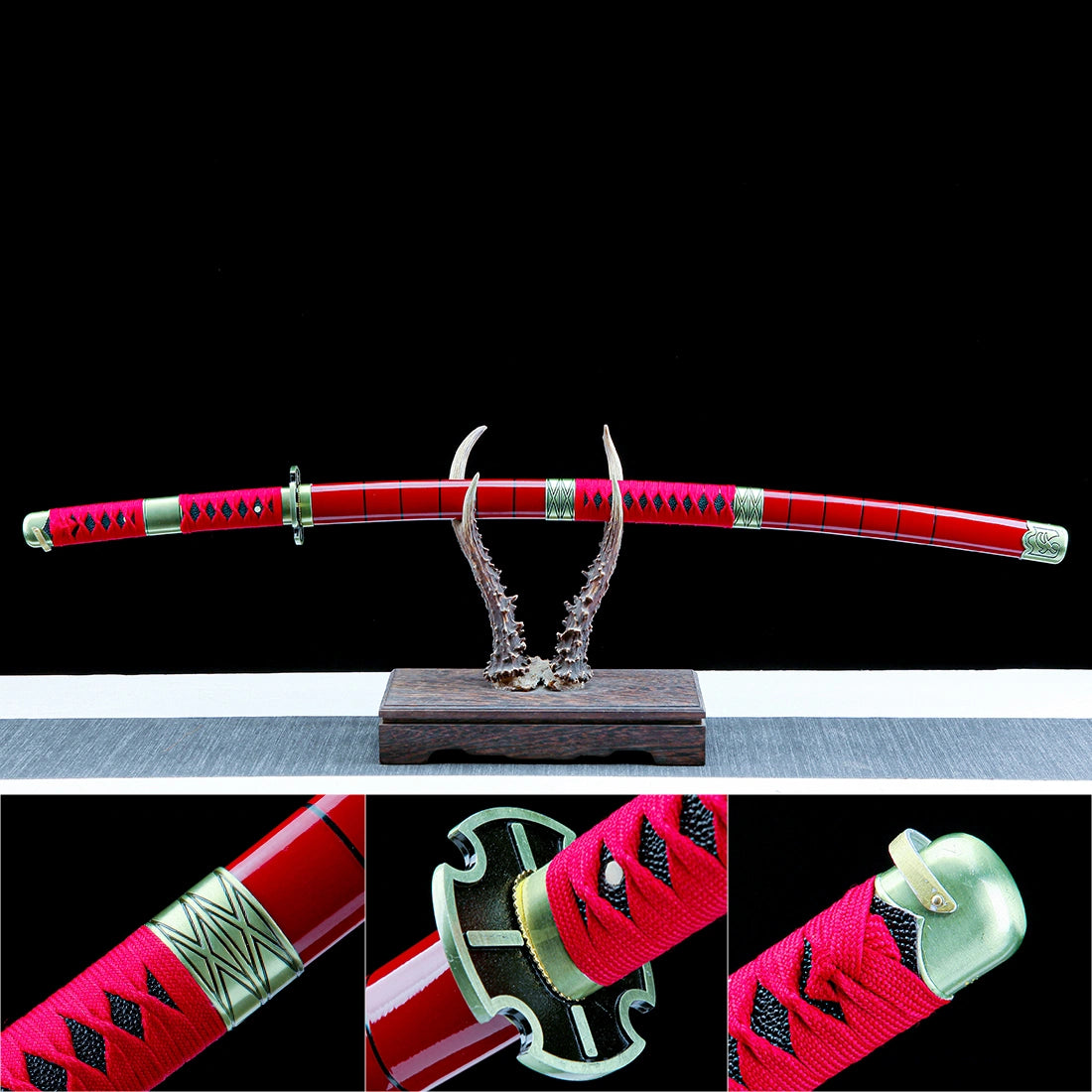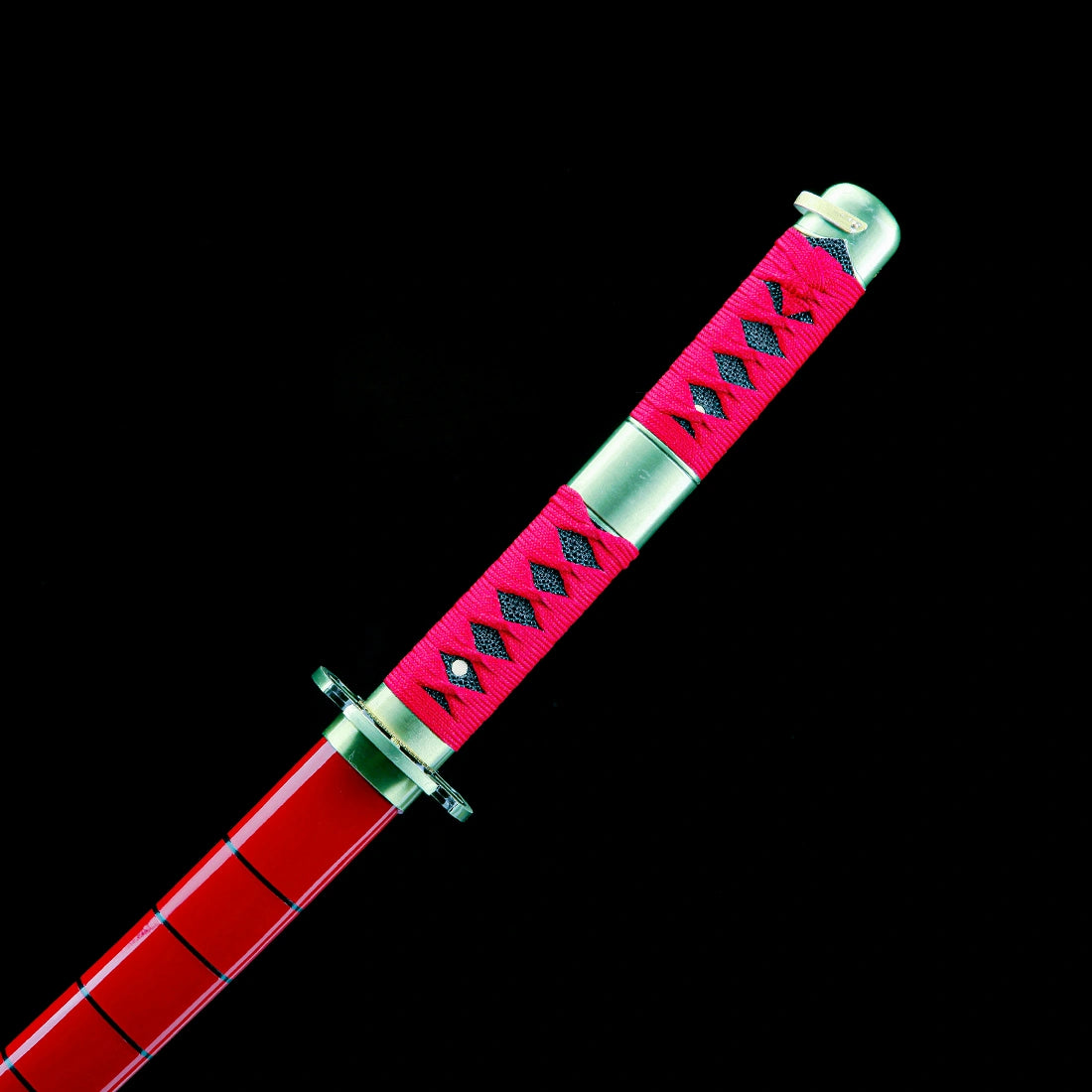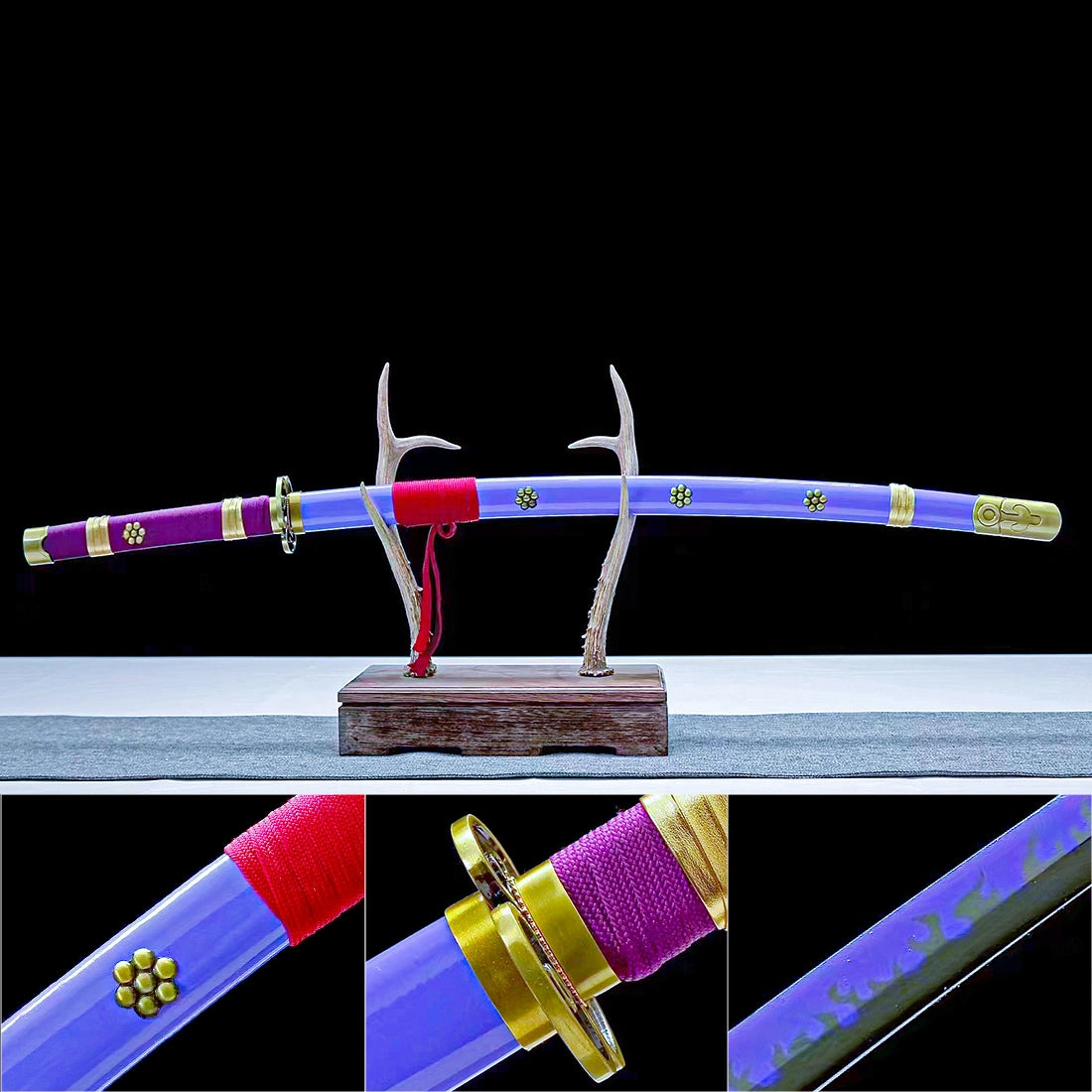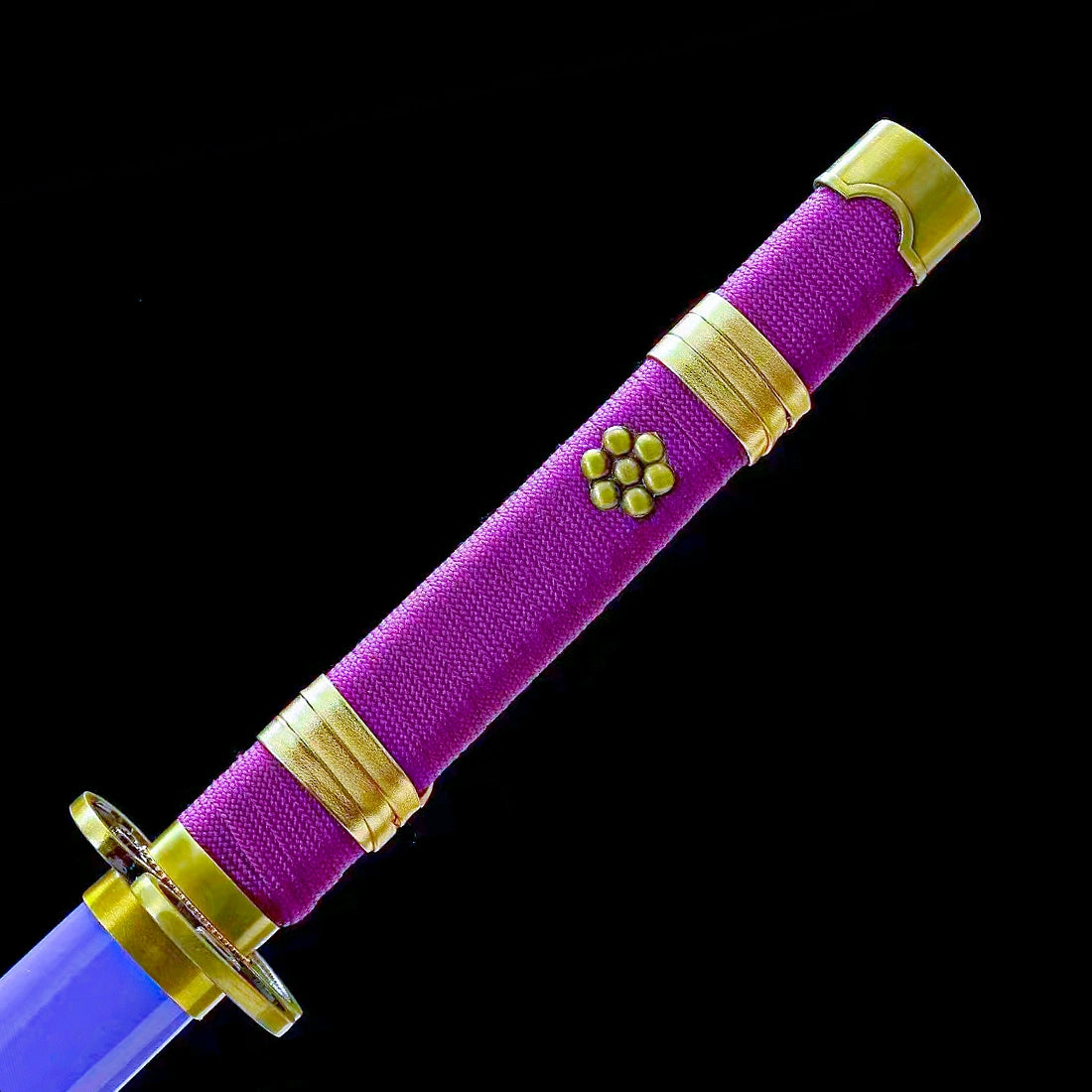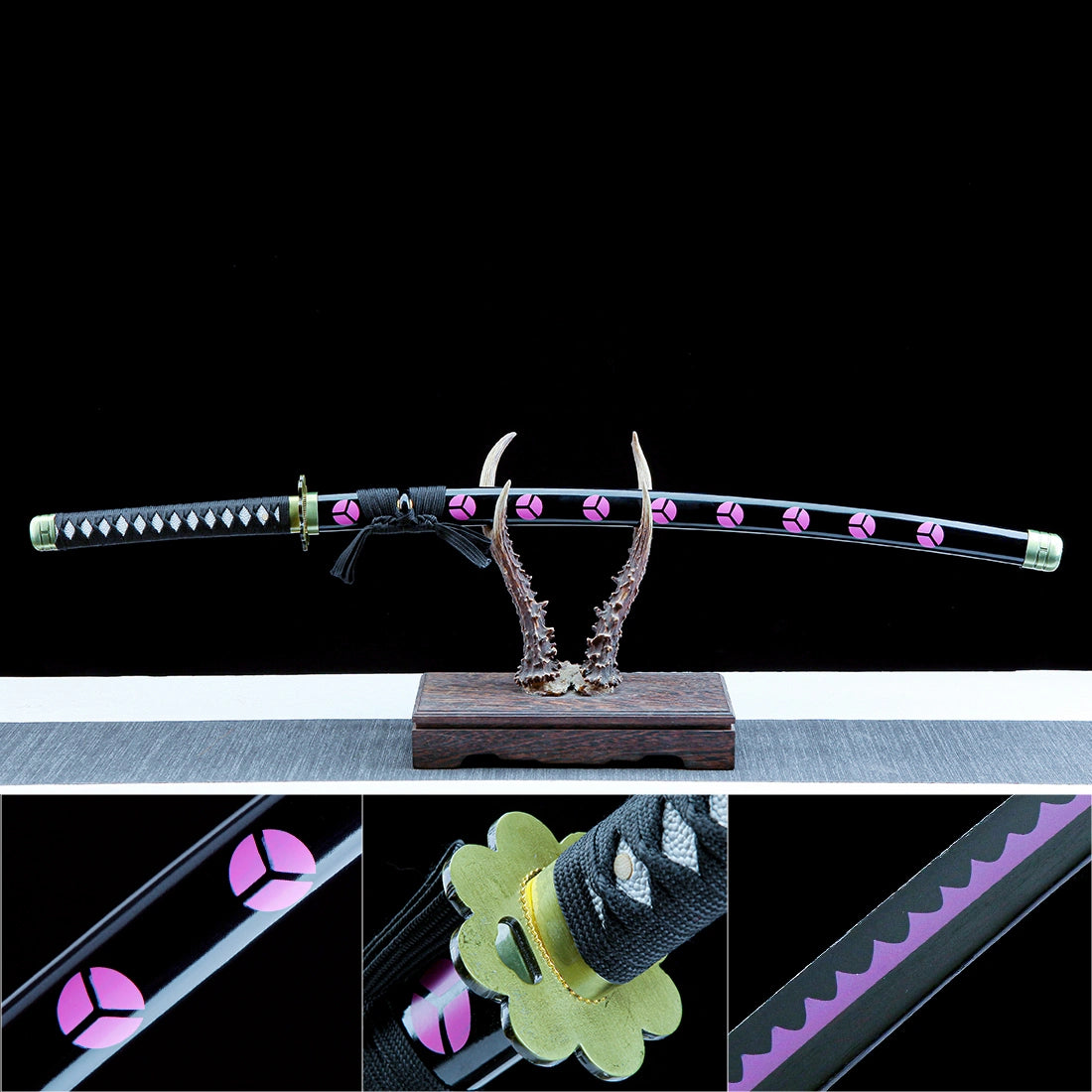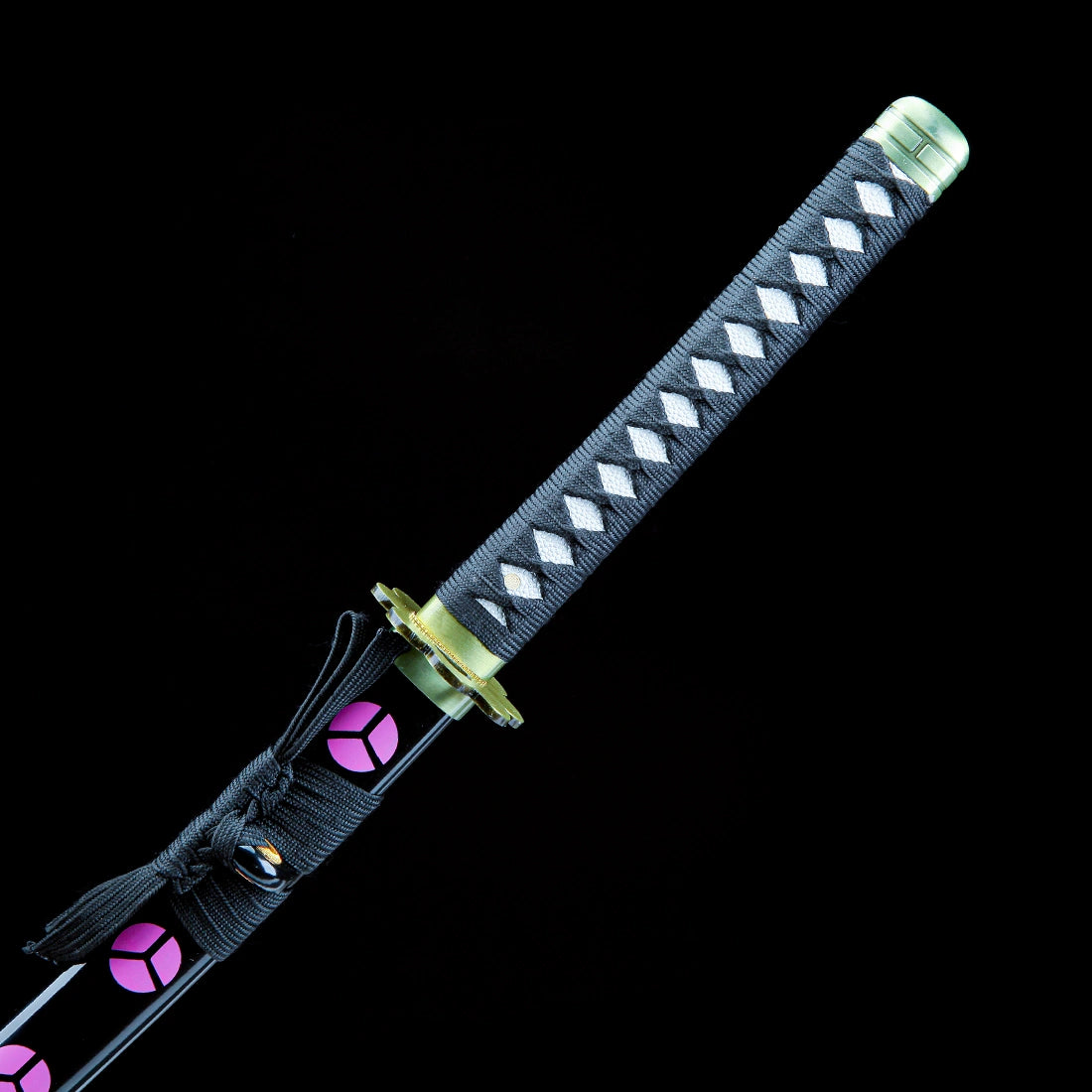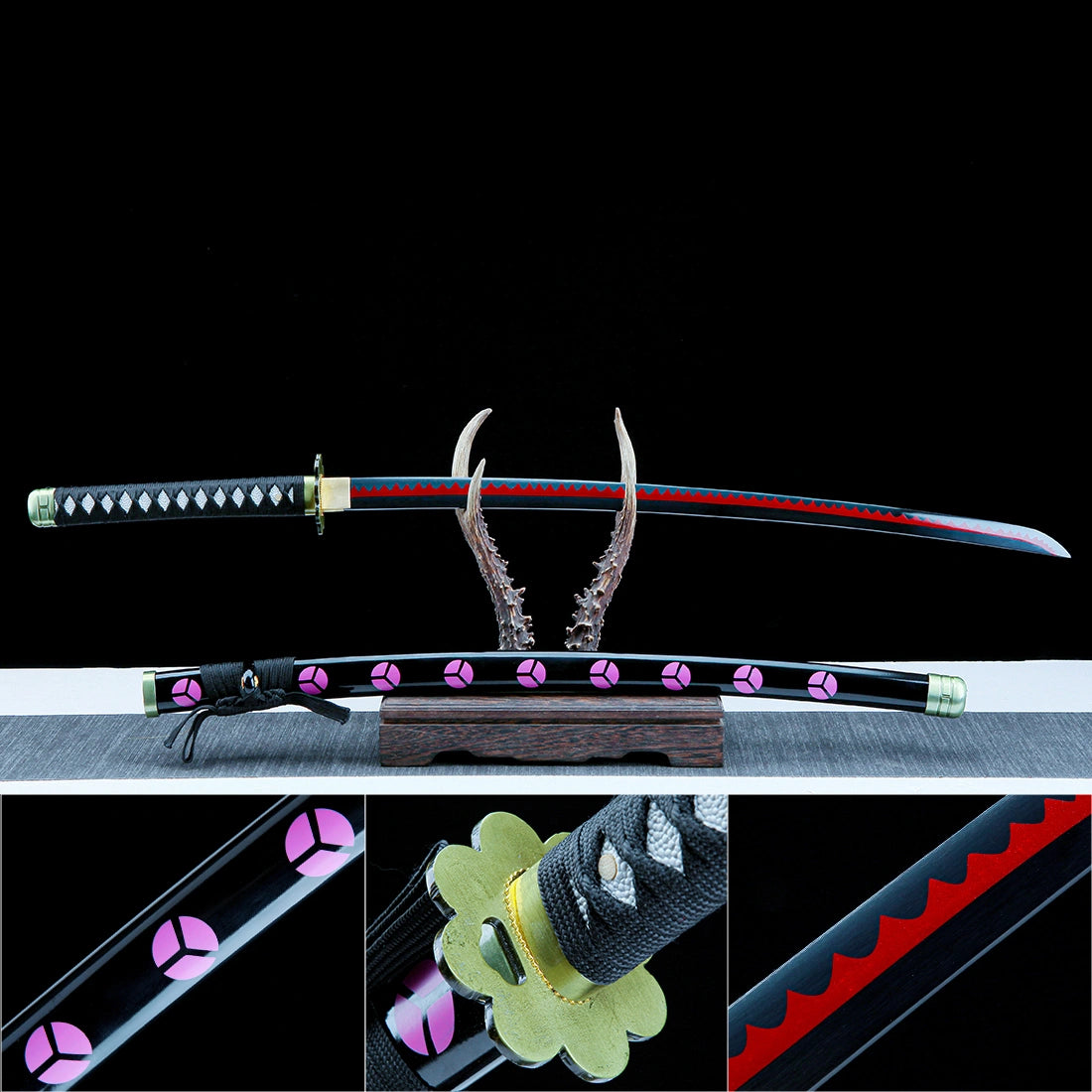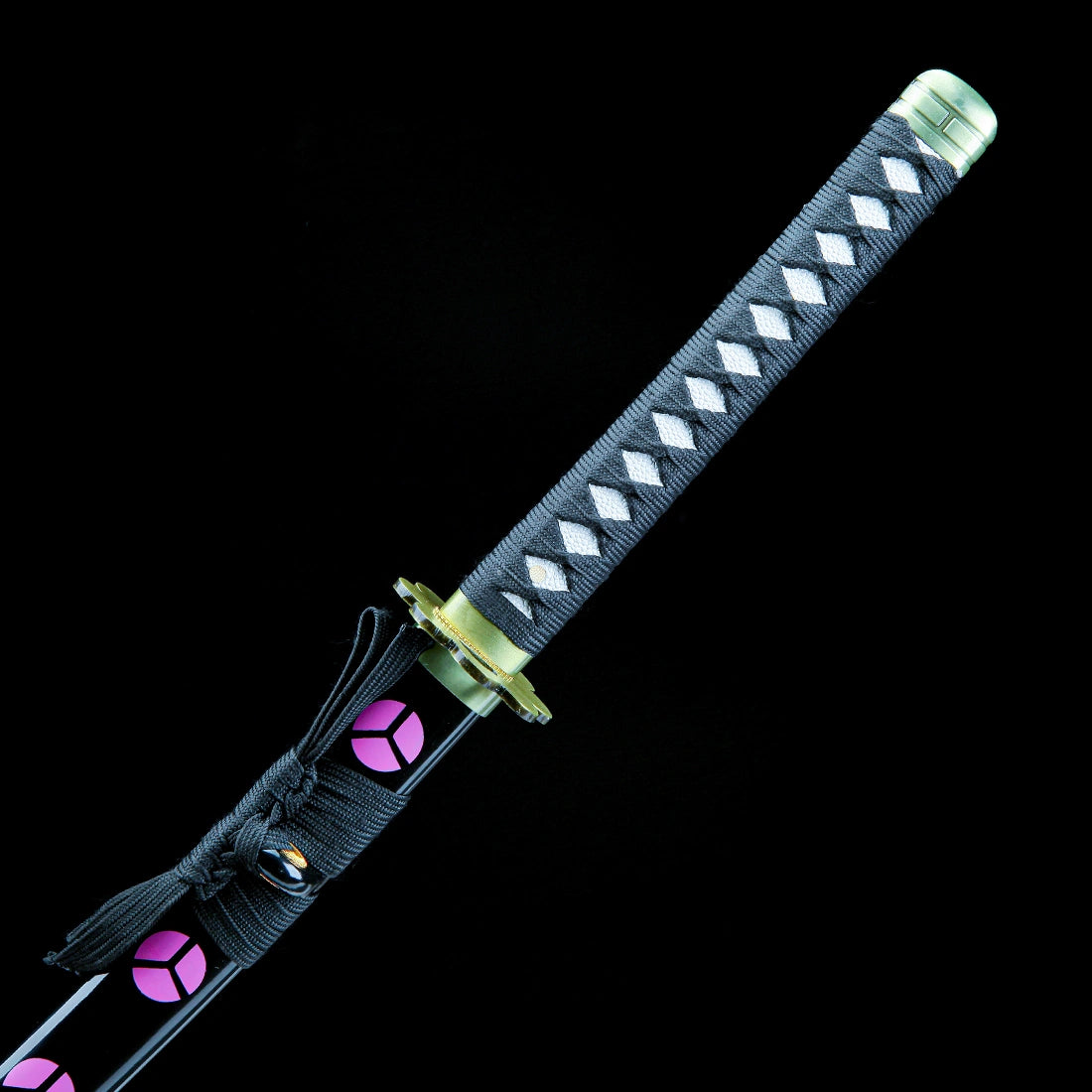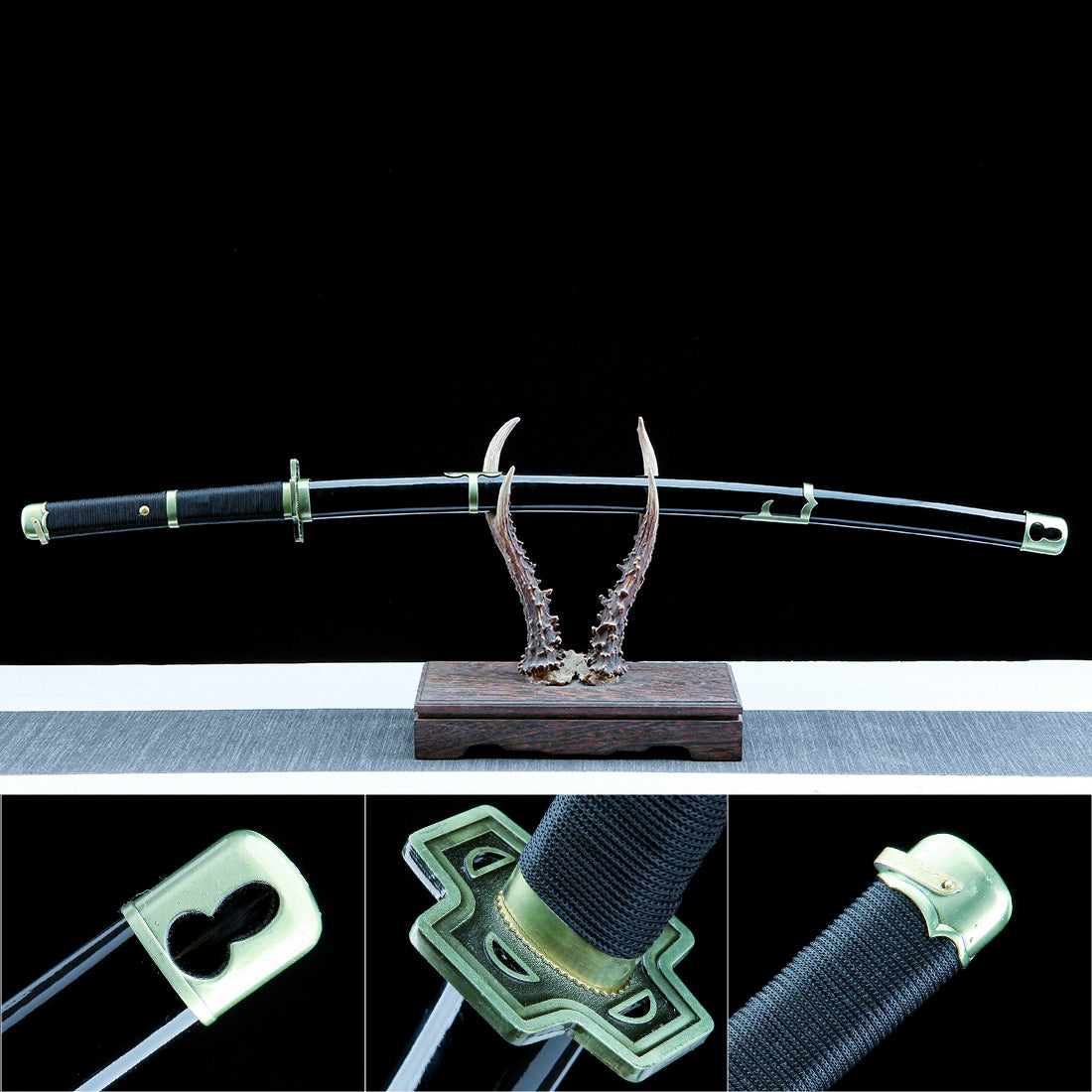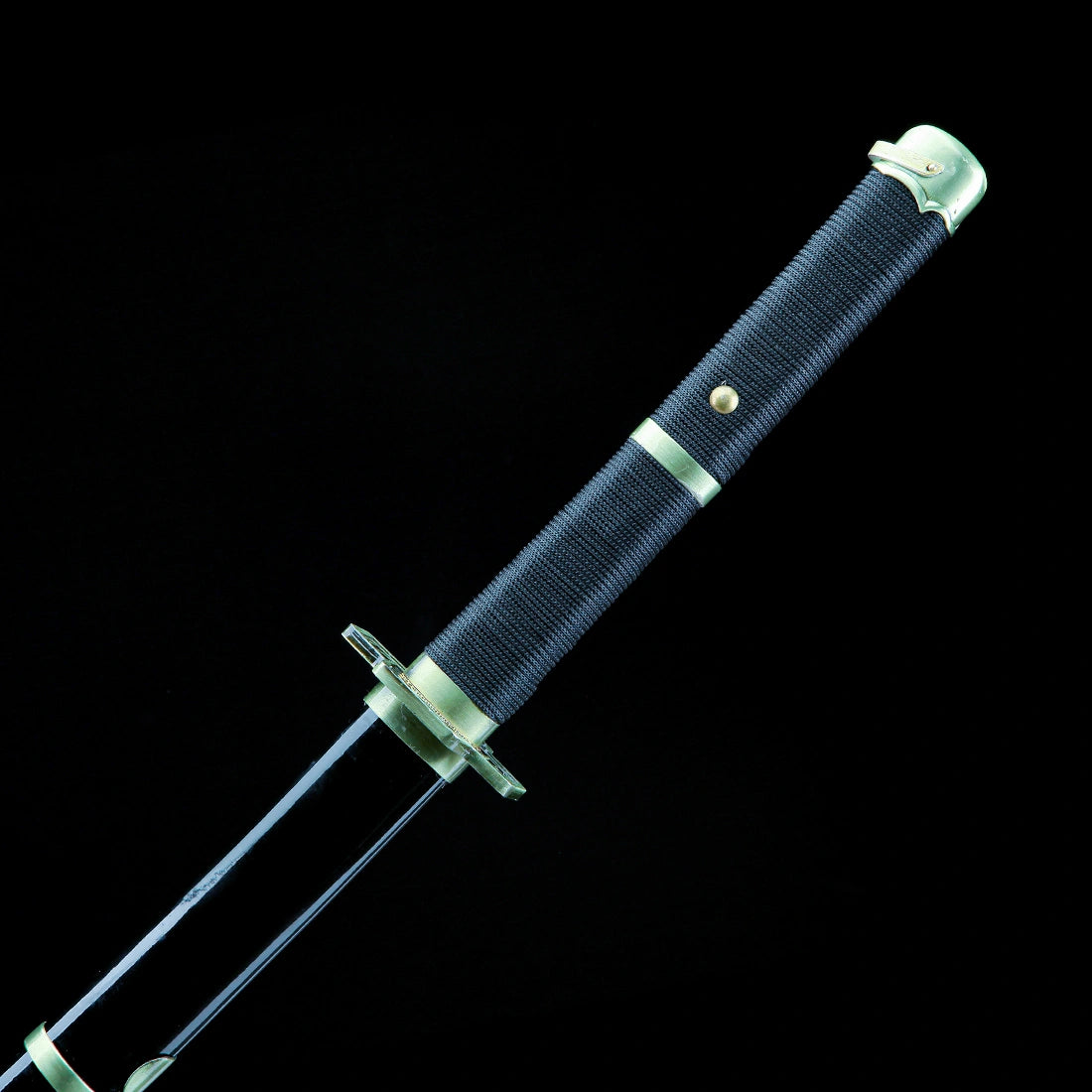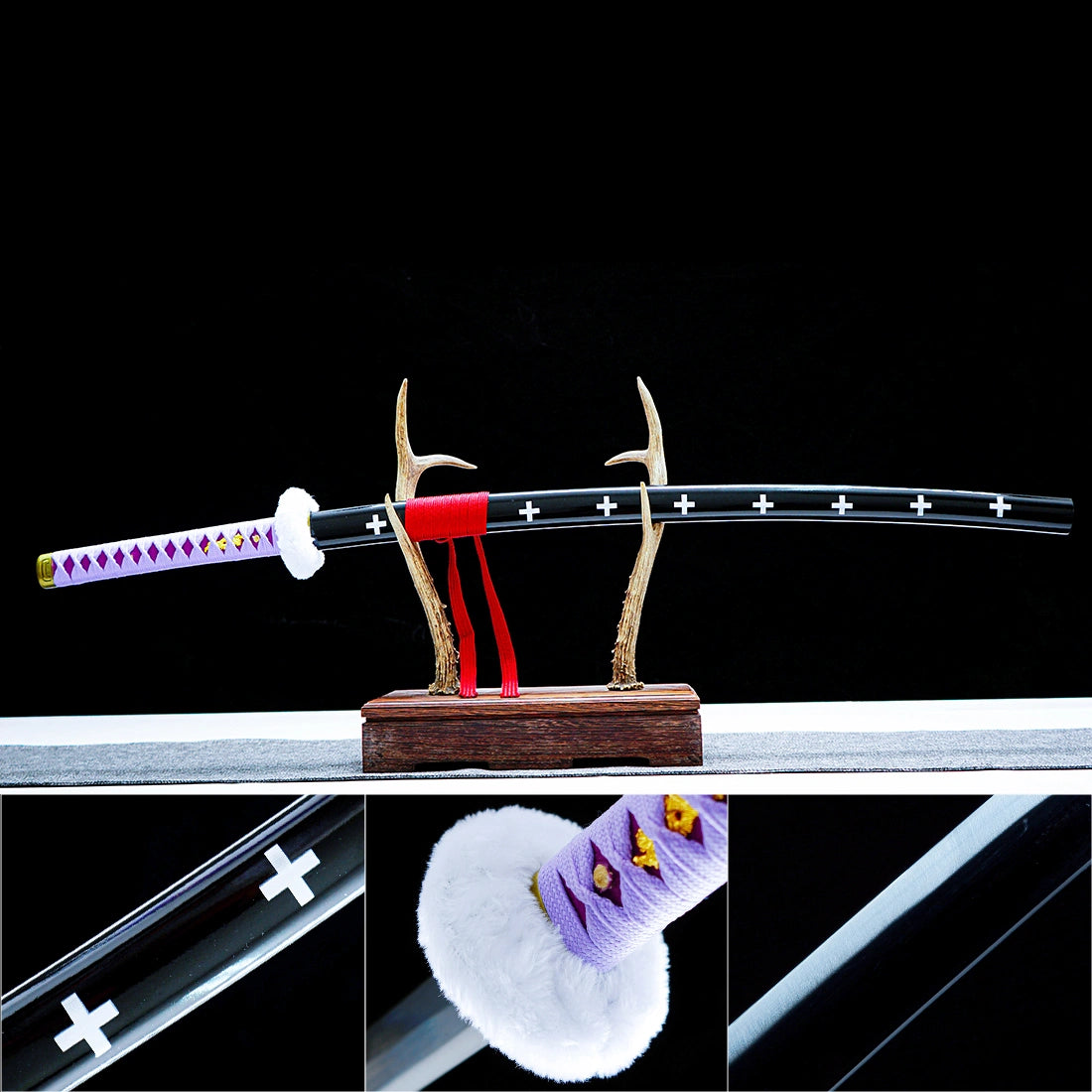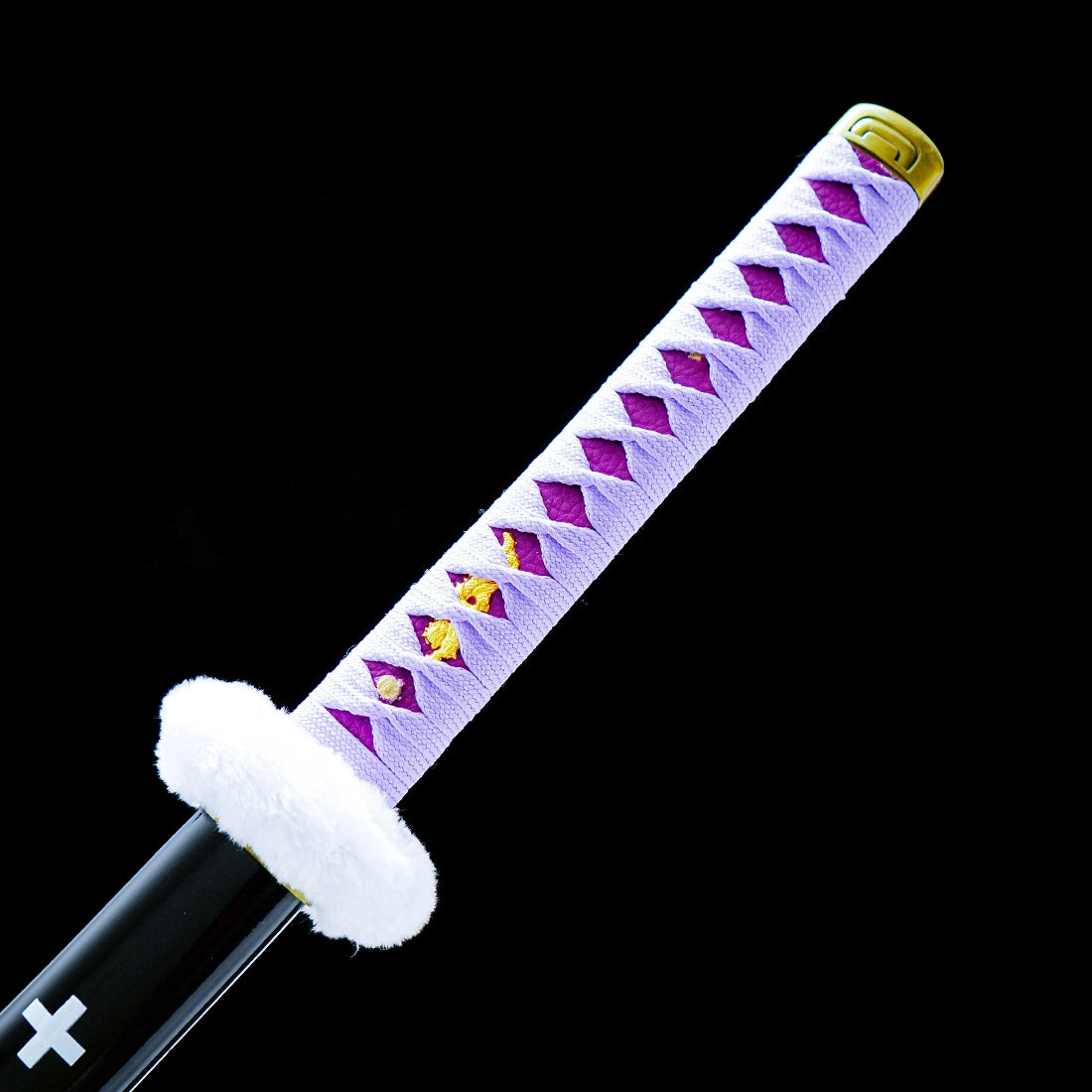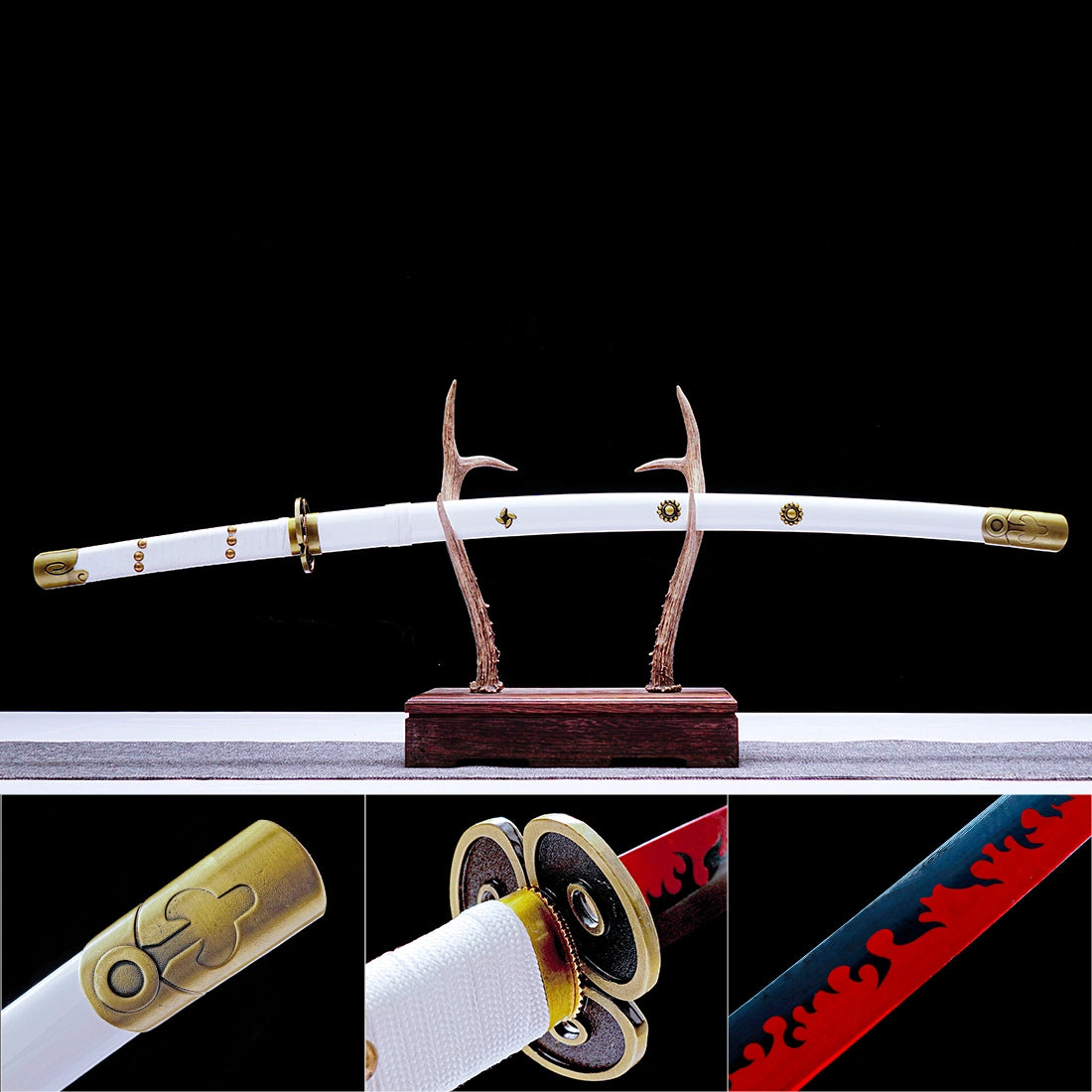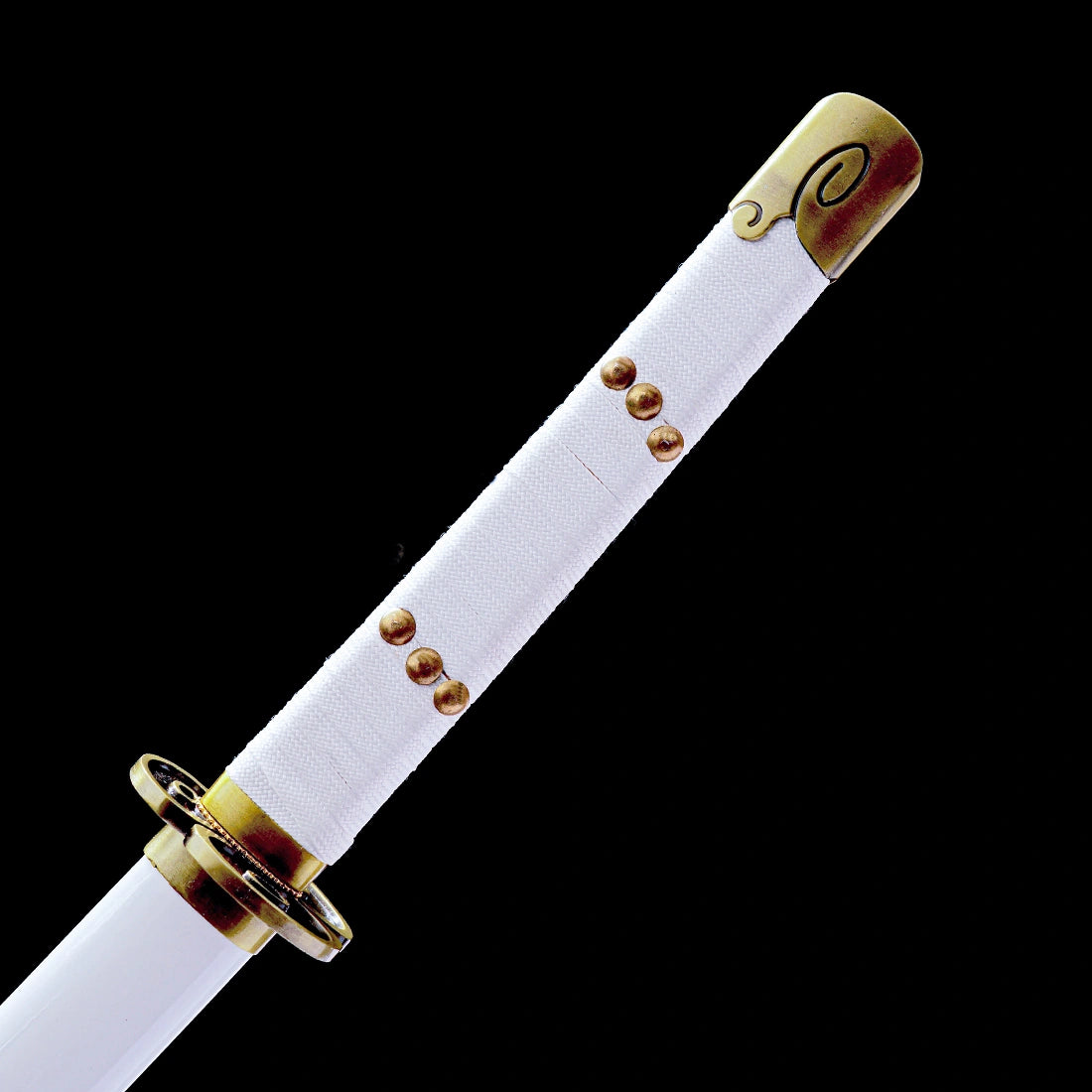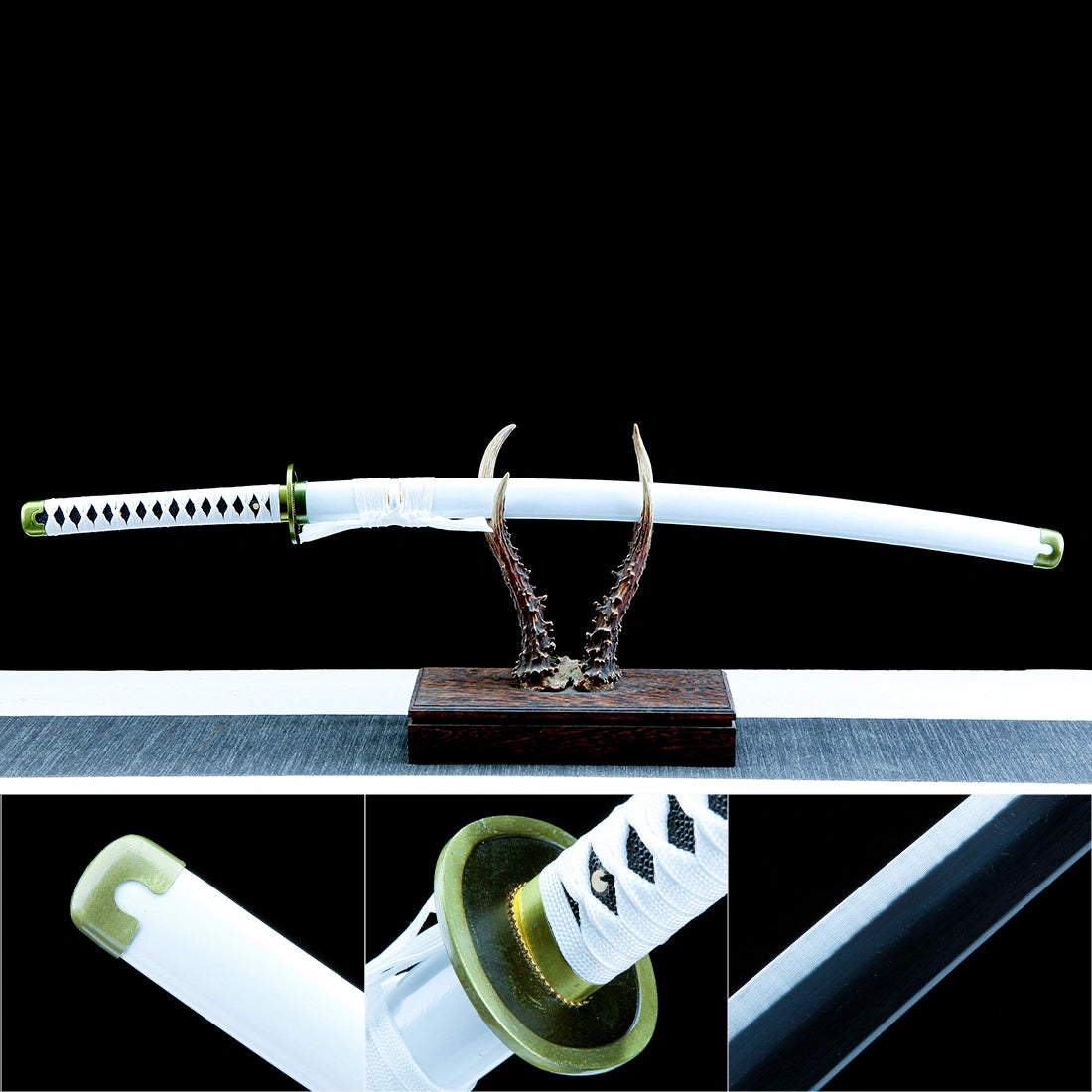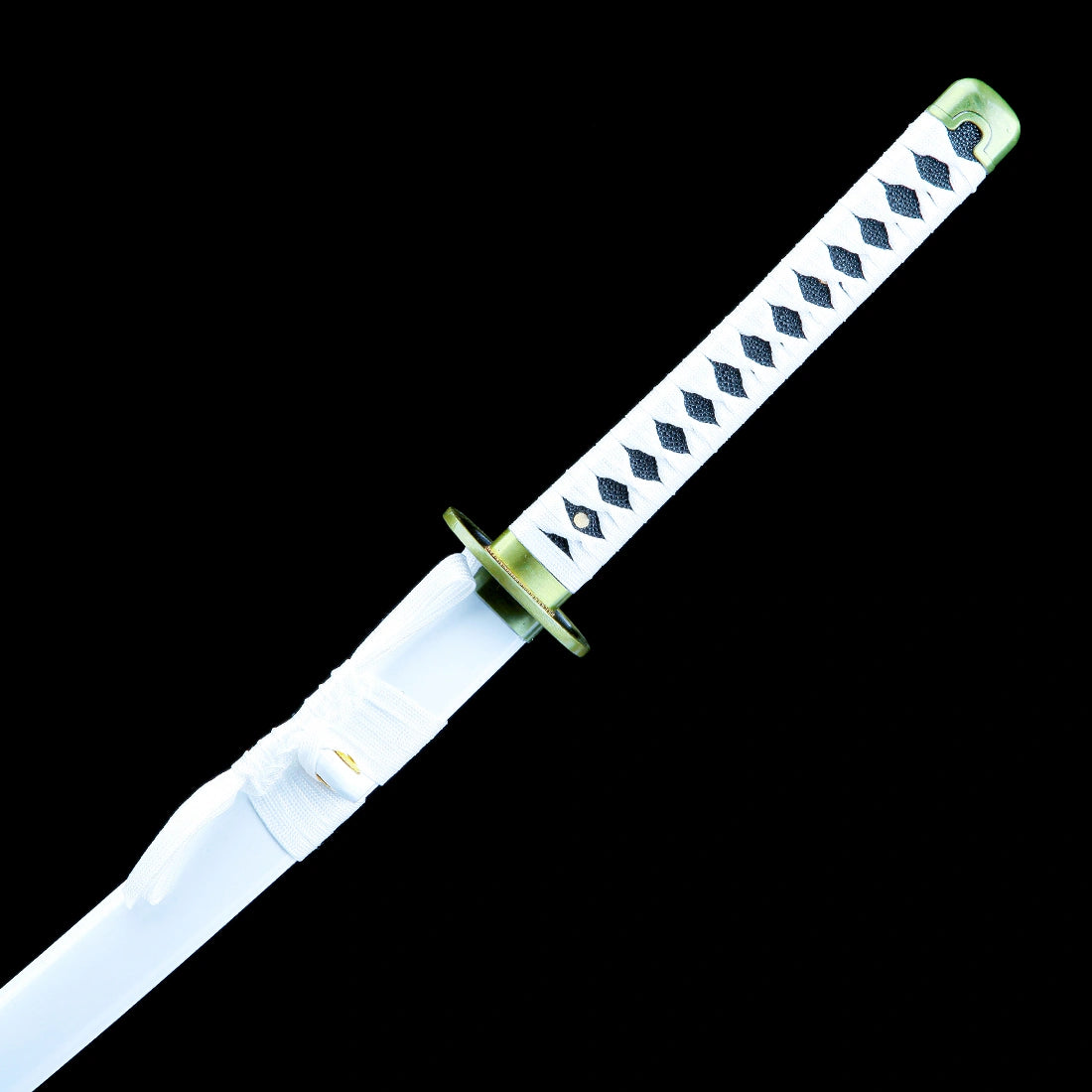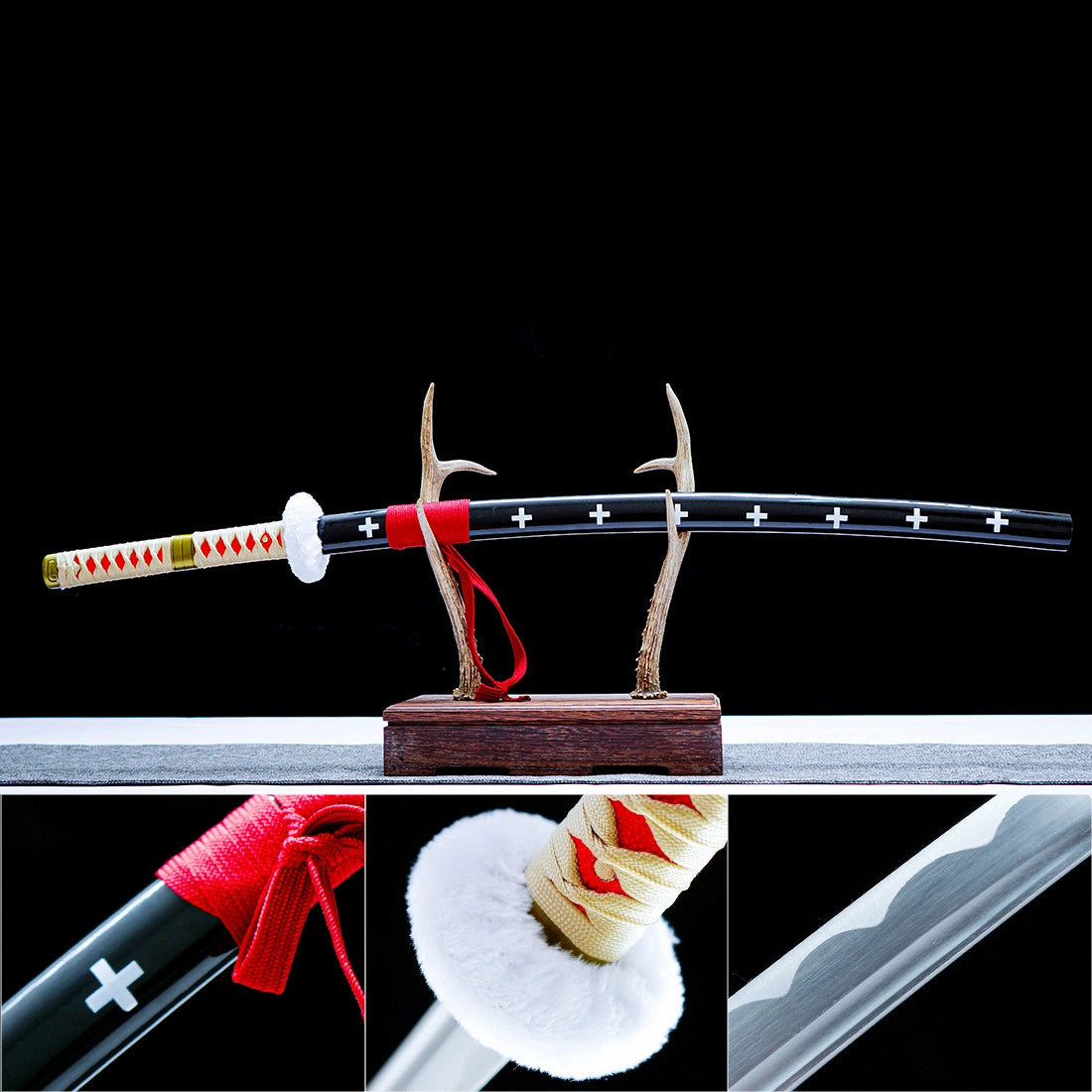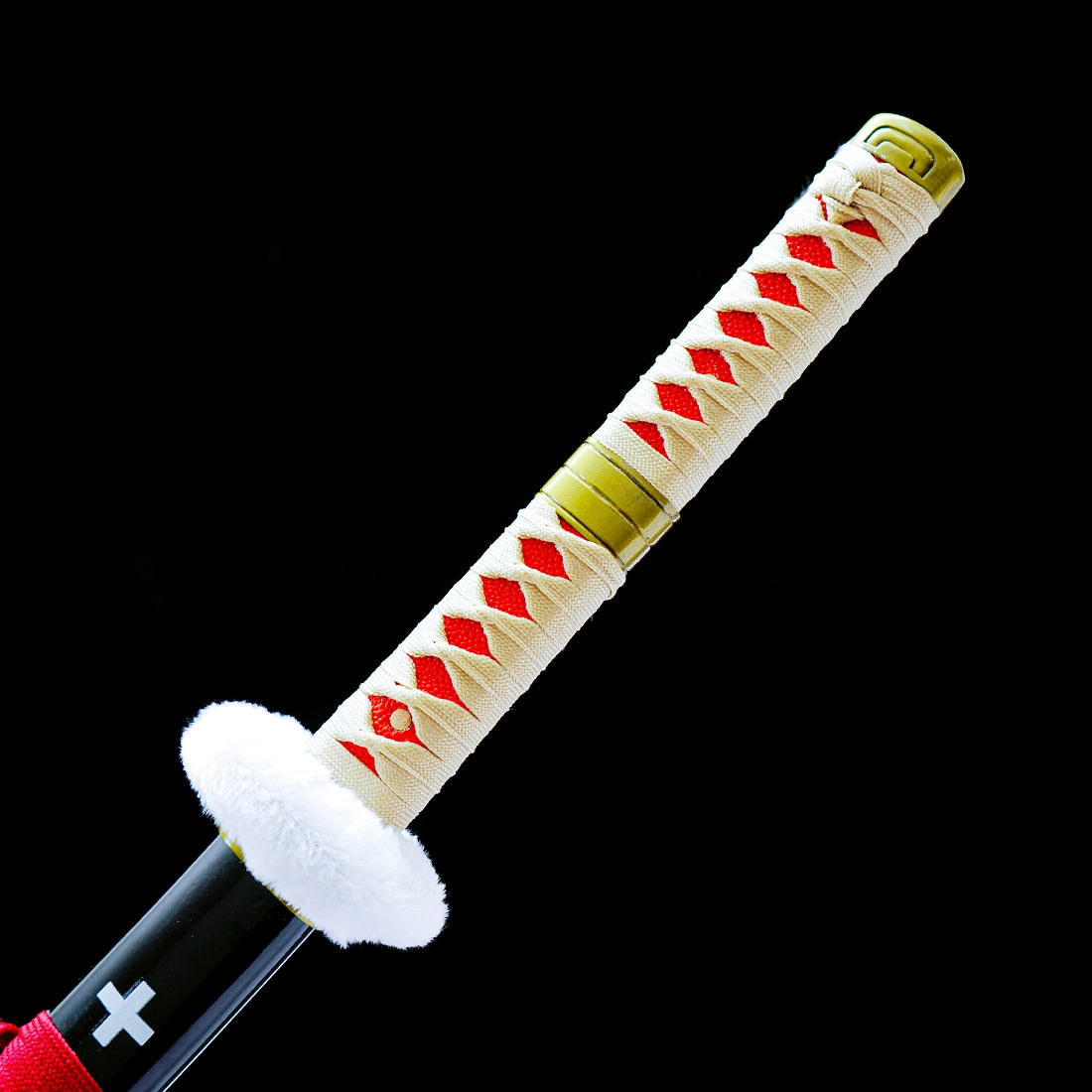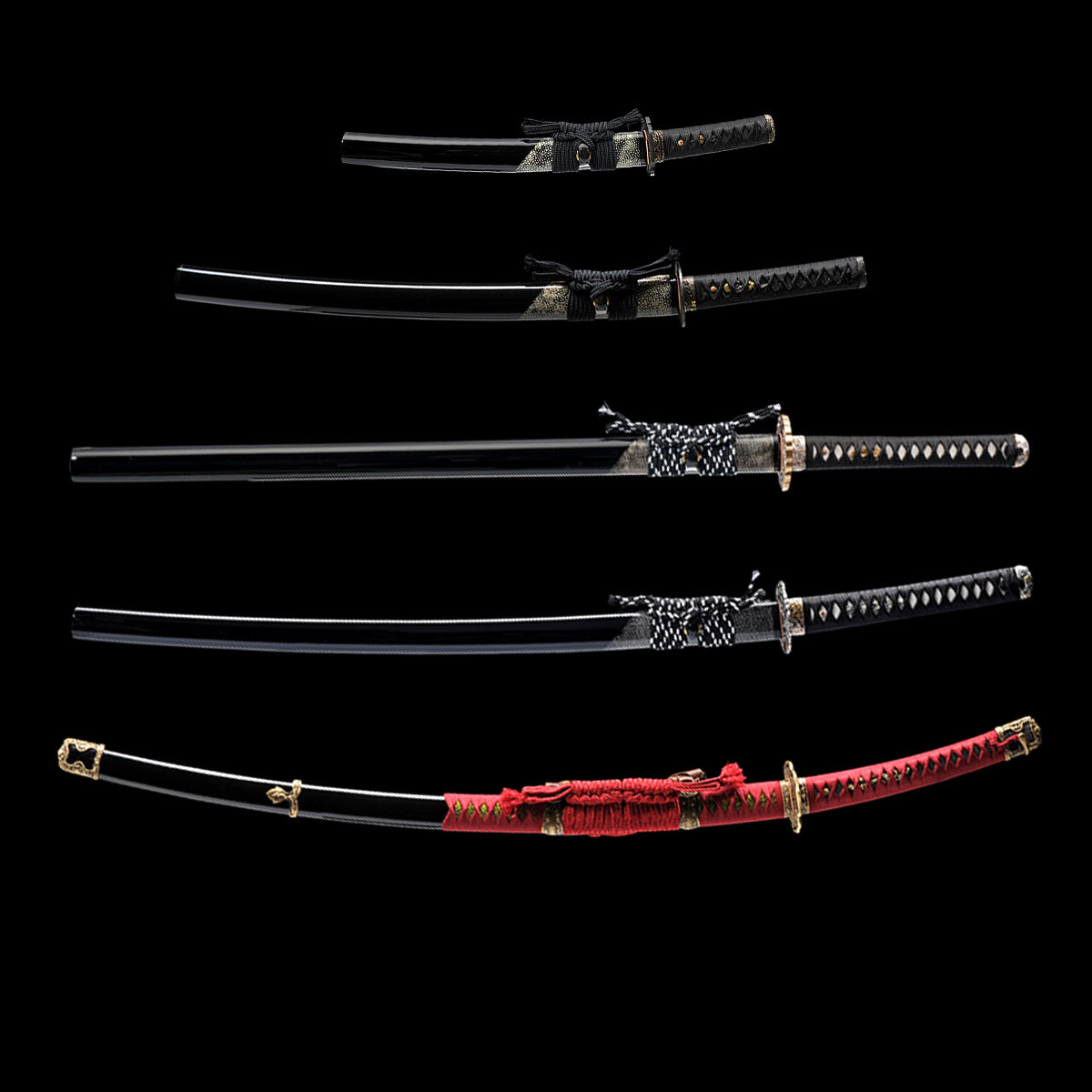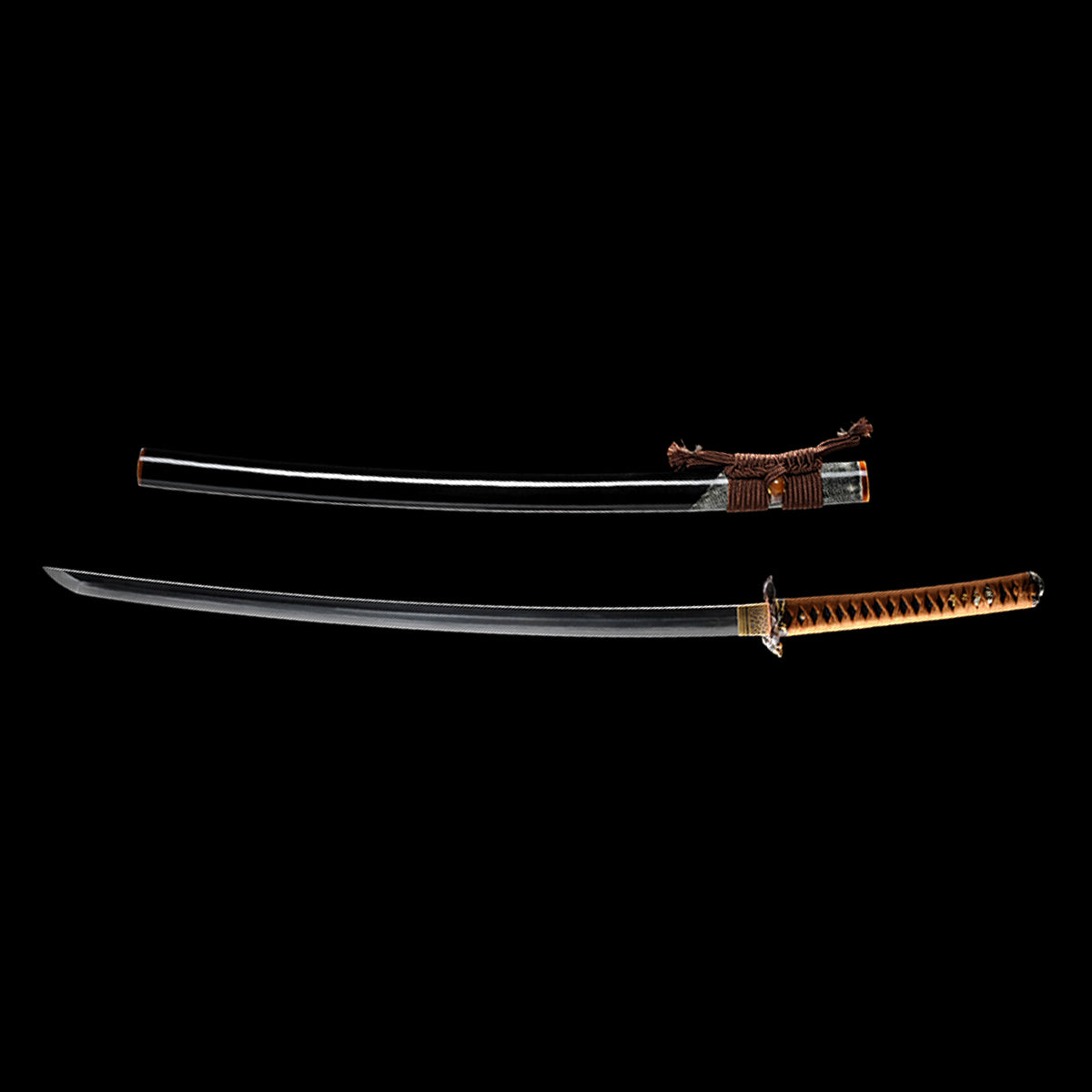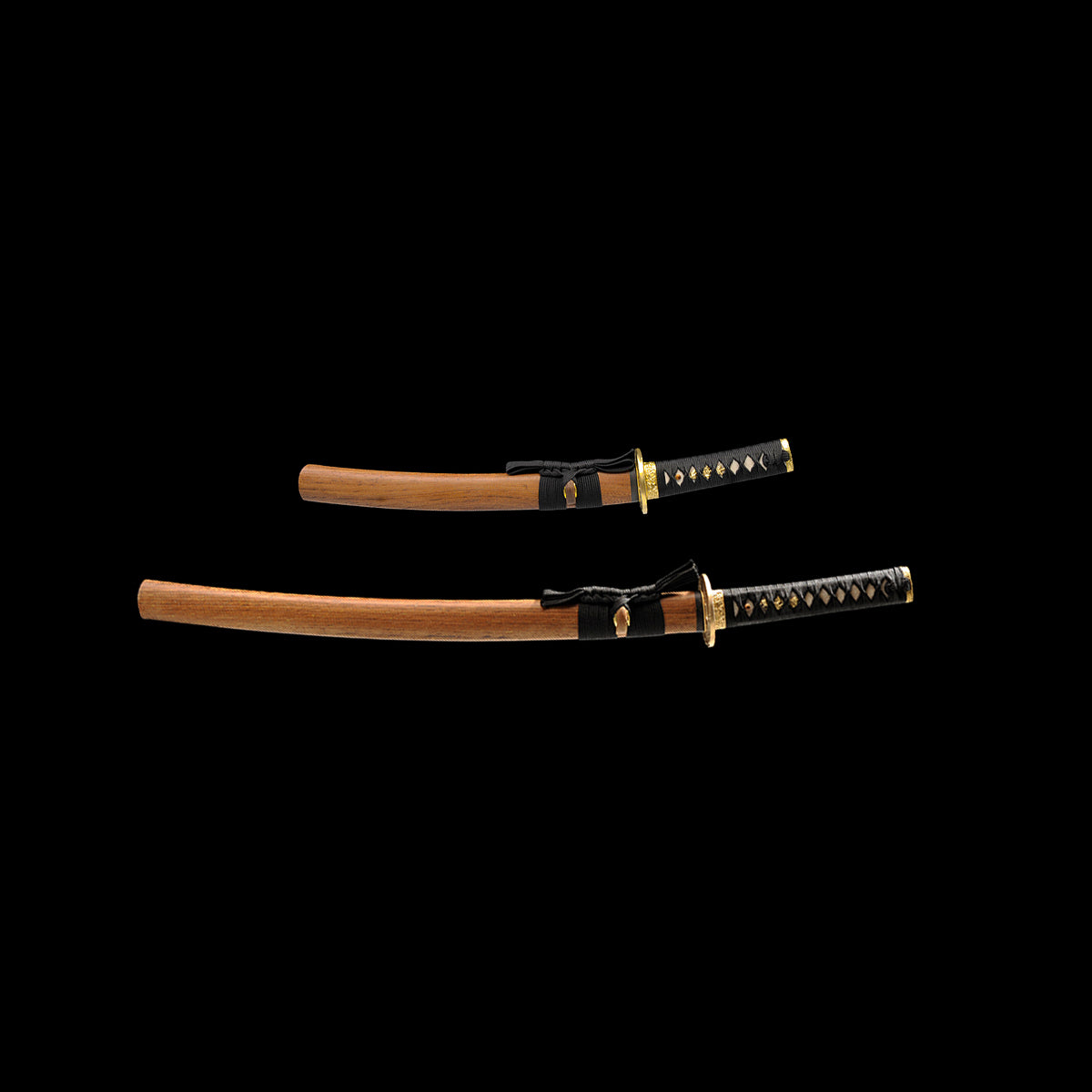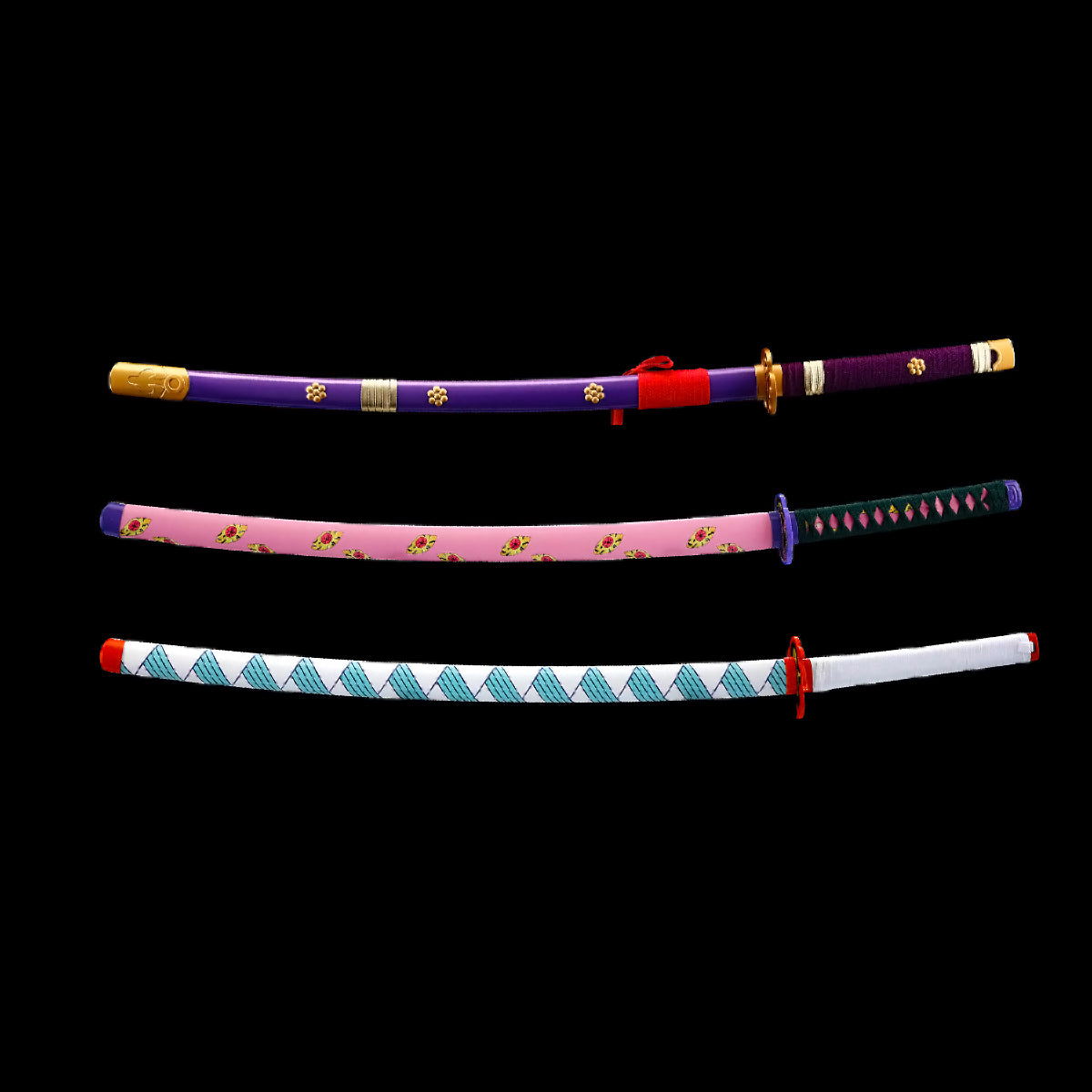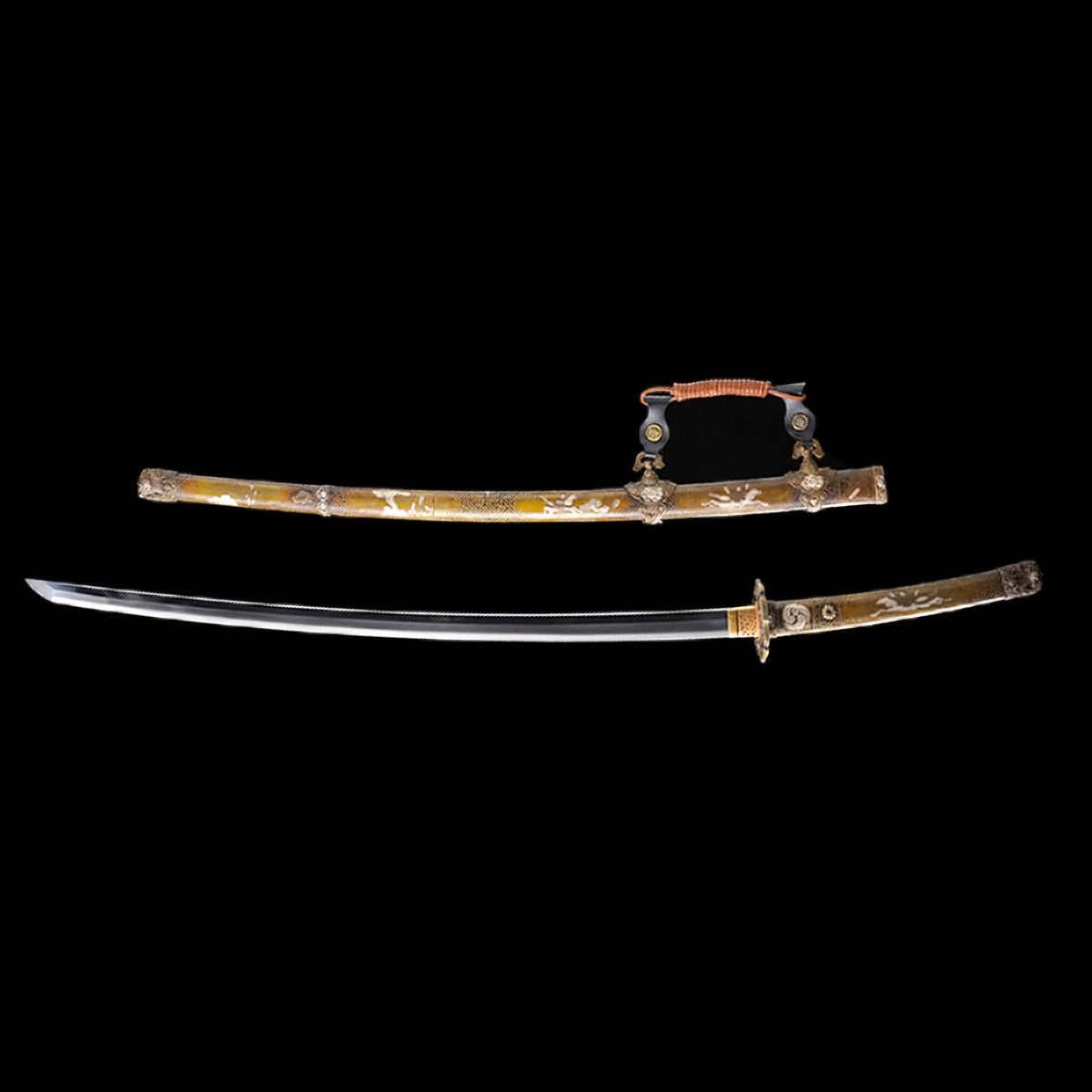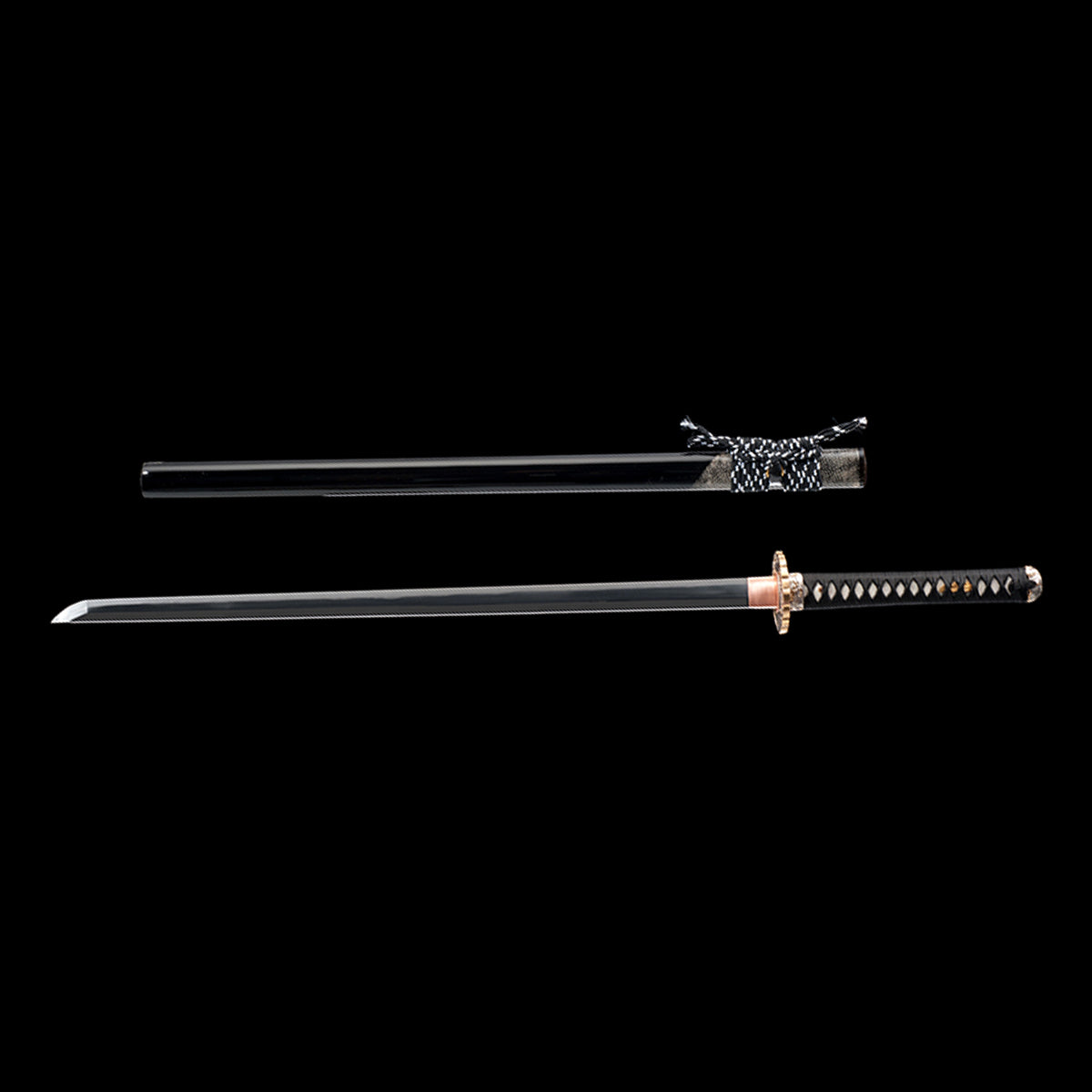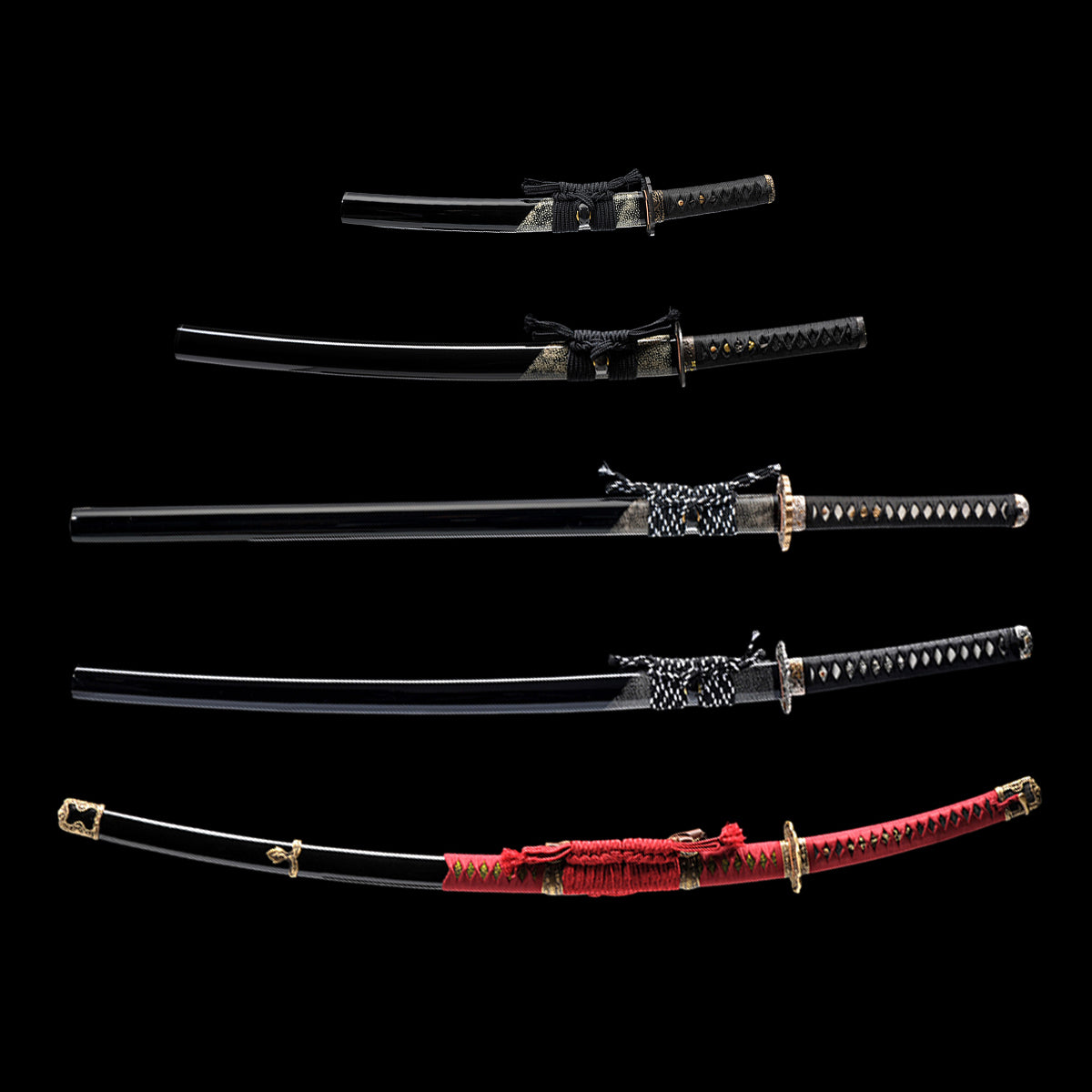FAQs
What is the name of the sword in One Piece?
What is the name of the sword in One Piece?
Professional Analysis: Swords in the World of One Piece
The question "What is the name of the sword in One Piece?" presupposes a singular, iconic weapon, akin to Excalibur in Arthurian legend. However, within the vast and intricate world of One Piece, this premise is fundamentally flawed. There is no one "sword in One Piece." Instead, the series features a diverse ecosystem of named, graded, and legendary bladed weapons, each with its own history, hierarchy, and significance.
This analysis will deconstruct the complex role of swords in One Piece by examining their classification system, legendary examples, and the context that makes them powerful.
1. The Classification System: The "Meito" (名刀)
Swords of note are not merely weapons; they are art objects and historical artifacts classified under the term Meito (名刀), which translates to "Famous Sword" or "Named Sword." This is not a single name but a category of elite blades. The known hierarchy of Meito, from lowest to highest grade, is as follows:
- Grade Swords (良業物, Ryo Wazamono): The lowest tier of ranked swords. There are 50 known swords in this grade. An example is Yamaoroshi (the axe-blade sword wielded by Chef Zeff, later used by Sanji).
- Skillful Grade Swords (業物, Wazamono): A higher tier of sharp and powerful blades. There are 21 known swords in this grade. An example is Kashu (owned by Tashigi).
- Great Grade Swords (大業物, O Wazamono): Among the highest quality swords in the world. There are 12 known swords in this grade. This tier includes some of the most famous blades:Wado Ichimonji: One of Roronoa Zoro's primary swords, a pristine white blade of immense personal significance.Enma: Another of Zoro's swords, formerly wielded by Kozuki Oden. It is uniquely dangerous as it forcibly draws out excessive Haki from its user, risking their life but offering immense power potential.Ame no Habakiri: The sister sword to Enma, also wielded by Oden and now by his son, Kozuki Momonosuke.
- Supreme Grade Swords (最上大業物, Saijo O Wazamono): The absolute pinnacle of craftsmanship and power. There are only 12 such swords in the entire world, making them the rarest and most coveted blades. Known examples include:Yoru (夜 - "Night"): Wielded by Dracule "Hawk-Eyes" Mihawk, the world's greatest swordsman. It is a massive black blade (黒刀, Kokuto) that serves as a symbol of his supreme status.Murakumogiri (叢雲霧り - "Gathering Clouds Mist Cutter"): Wielded by the late "Whitebeard," Edward Newgate. It was a naginata (pole weapon) classified as a Supreme Grade Blade, showcasing that the Meito classification extends beyond traditional katanas.Ace (formerly): The sword of the legendary pirate Gol D. Roger, the King of the Pirates. Its current whereabouts are unknown.
2. The Concept of "Kokuto" (黒刀) - Black Blades
A crucial concept separate from the Meito grades is that of the Black Blade (黒刀, Kokuto). This is not a type of metal or a forging technique, but a state achieved through immense mastery.
- Definition: A Black Blade is created when a swordsman permanently imbues their Meito with their Haki (specifically Armament Haki, or Busoshoku Haki) through countless battles. This process permanently turns the blade black and is believed to increase its rank and durability.
- Significance: Forging a blade into a Black Blade is considered the ultimate achievement for a swordsman, a testament to their complete unity with their weapon. Mihawk's Yoru is a Supreme Grade Sword that he also turned into a Black Blade, solidifying its status as the strongest sword in the world in the hands of the strongest swordsman.
3. The Answer to the Implied Question: The Protagonist's Sword
If the question seeks the name of the most prominent sword wielded by a main character, the answer would be one of the blades of the series' primary swordsman, Roronoa Zoro. His current trio of blades are all elite Meito:
- Enma (閻魔): A Great Grade Sword. Its name means "King of Hell." It is the sword that scarred Kaido and is currently Zoro's most powerful weapon due to its ability to draw out his Conqueror's Haki (Haoshoku Haki).
- Wado Ichimonji (和道一文字): A Great Grade Sword. Its name means "The Straight Path of Harmony." It is Zoro's most treasured blade, a promise to his deceased childhood friend Kuina.
- Kitetsu III (三代鬼徹 - "Third Generation Demon Splitter"): An ungraded but cursed blade of suspected Skillful Grade quality. Zoro tamed its curse through his immense willpower.
Conclusion: Why There Is No Single "Sword in One Piece"
The world of One Piece is built on depth, history, and a defined power structure. This extends to its weapons. Swords are not generic props; they are characters in their own right with names, grades, and legends.
Therefore, the "name of the sword" is not a single answer but depends on context:
- The strongest known sword is Yoru, a Supreme Grade Meito and a Black Blade, wielded by Mihawk.
- The most narratively significant sword for the protagonist is Enma or Wado Ichimonji.
- The rarest class of swords are the 12 Supreme Grade Blades.
The power of a sword in One Piece is ultimately a reflection of its wielder's strength, willpower (Haki), and skill. A Supreme Grade blade in weak hands is merely a trophy, while a master can turn a lower-grade blade into a legendary weapon. This symbiotic relationship between wielder and weapon is the core principle that defines bladed combat in Eiichiro Oda's masterpiece.
What are the 12 strongest swords in One Piece?
What are the 12 strongest swords in One Piece?
Professional Analysis: The 12 Supreme Grade Swords (最上大業物, Saijō Ō Wazamono)
The concept of the "strongest swords" in One Piece is formally defined by a canonical classification system. The absolute pinnacle of this system is the rank of Supreme Grade Swords (最上大業物, Saijō Ō Wazamono). These 12 blades represent the zenith of craftsmanship, historical significance, and raw power within the series' lore.
It is crucial to understand that a sword's "strength" is not solely intrinsic; it is a synergy between the blade's quality and the wielder's mastery. A Supreme Grade blade is a force multiplier for a truly powerful fighter. Furthermore, the series' author, Eiichiro Oda, has not yet revealed all 12 blades by name. Therefore, this analysis will categorize the known swords based on their confirmed or heavily implied grades, focusing on the confirmed Supreme Grades and other blades that demonstrate comparable power.
The Known Hierarchy of Meito (名刀, Famous Swords)
- Supreme Grade (Saijō Ō Wazamono): 12 Swords. The strongest class.
- Great Grade (Ō Wazamono): 21 Swords.
- Skillful Grade (Wazamono): 50 Swords.
- Grade (Ryo Wazamono): Unknown number. The lowest tier of ranked blades.
The Confirmed and Speculative List of Elite Blades
This list is divided into two parts: Confirmed Supreme Grades and Blades of Supreme Grade Caliber (Great Grade swords that, through feats or unique properties, operate on a similar level).
Part 1: Confirmed Supreme Grade (Saijō Ō Wazamono) Swords
These are the blades explicitly stated or confirmed in the manga, databooks, or vivre cards to be among the legendary 12.
1. Yoru (夜, "Night")
- Wielder: Dracule Mihawk.
- Analysis: As the sword of the "World's Strongest Swordsman," Yoru is the benchmark for a Supreme Grade blade. It is a massive,十字形 (cross-shaped) black blade that Mihawk wields with effortless precision. Its size and power are symbolic of his unparalleled status. Furthermore, Mihawk has permanently turned it into a Black Blade (黒刀, Kokutō) through the constant infusion of his supreme Haki, a feat that signifies ultimate mastery and enhances the blade's durability and rank.
2. Murakumogiri (叢雲霧り, "Gathering Clouds Mist Cutter")
- Wielder: Edward Newgate (Whitebeard).
- Analysis: This weapon is a naginata (a Japanese pole weapon), demonstrating that the "sword" classification (Meito) in One Piece extends to other types of bladed weapons. Whitebeard used it in conjunction with his Gura Gura no Mi (Tremor-Tremor Fruit) powers to devastating effect, clashing evenly with Gol D. Roger's Ace. Its classification as Supreme Grade confirms its immense durability, as it withstood the incredible forces generated by its wielder's world-shaking attacks.
3. Ace
- Wielder: Gol D. Roger.
- Analysis: The saber of the Pirate King himself. While its specific abilities are unknown, its status is undeniable. It was shown clashing evenly with Whitebeard's Murakumogiri, a confirmed Supreme Grade weapon. Its name and legacy are intrinsically linked to the greatest pirate in history, and its current whereabouts (potentially with Roger's son, Portgas D. Ace's namesake) are a subject of great speculation.
Part 2: Blades of Demonstrated Supreme Grade Caliber
These are blades that, while not confirmed as part of the 12, possess feats, lore, and unique properties that place them in the same echelon of power. Many are among the 21 Great Grade swords but have demonstrated potential far beyond that classification.
4. & 5. Enma (閻魔) & Ame no Habakiri (天羽々斬)
- Wielder(s): Kozuki Oden (both), now Roronoa Zoro (Enma) and Kozuki Momonosuke (Ame no Habakiri).
- Analysis: These two katana are a paired set, the pinnacle of the craftsmanship of the master swordsmith Kozuki Sukiyaki. Their uniqueness is paramount:Enma is the only blade ever to have scarred Kaido, a feat it accomplished in Oden's hands and recently in Zoro's. It possesses the dangerous ability to forcibly draw out the wielder's Haki (Haoshoku and Busoshoku). Unskilled wielders risk having their life drained away, but a master can unleash its full, terrifying power. Zoro's mastery of Enma is a direct pathway to him achieving Black Blade status.Ame no Habakiri is Enma's equal and counterpart. While its specific properties are less detailed, it was used in tandem with Enma by Oden and is entrusted to Momonosuke, signifying its equal importance and power.Why they belong here: Their feats (scarring Kaido) and unique Haki-draining properties are unmatched by any other known Great Grade sword. They are explicitly stated to be the two highest-quality blades ever produced in Wano, the nation synonymous with supreme swordsmithing. It is highly plausible one or both could be Supreme Grade.
6. Shodai Kitetsu (初代鬼徹, "First Generation Demon-Splitter")
- Wielder: Unknown (likely a top-tier World Government figure, e.g., Kong or a Five Elder Star).
- Analysis: The Kitetsu blades are a line of cursed swords, with each generation being of a higher grade. The third-generation blade (Sandai Kitetsu) is a Skillful Grade, and the second-generation (Nidai Kitetsu) is a Great Grade. By this progression, the first-generation Kitetsu must be a Supreme Grade blade. Its curse and power are presumed to be immense, and its whereabouts are one of the series' great mysteries. It is likely in the possession of a character of immense willpower and status.
7. Gryphon
- Wielder: "Red-Haired" Shanks.
- Analysis: The saber of one of the Four Emperors (Yonko). While its grade has not been officially revealed, its feats and wielder's status are undeniable. Shanks used it to clash with Whitebeard's Murakumogiri, splitting the sky—a signature phenomenon of Yonko-level Haki clashes. The blade's durability and ability to channel Shanks's monstrous Conqueror's Haki place it, by default, in the highest tier of weapons. It is almost certainly either a Supreme Grade or the absolute top of the Great Grade list.
8. Napoleon
- Wielder: Charlotte Linlin (Big Mom).
- Analysis: A unique case. Napoleon is a Homie, a living weapon born from a fragment of Big Mom's own soul infused into a hat that transforms into a powerful saber. As an extension of a Yonko's soul and power, it possesses incredible durability (clashing with Zeus, Hera, and other high-level attacks) and the ability to channel Big Mom's own immense Haki and physical strength. While not a traditionally forged Meito, its demonstrated power and role in a Yonko's arsenal earn it a place among the most potent bladed weapons.
9. Shusui (秋水, "Autumn Water")
- Wielder(s): Shimotsuki Ryuma (legend), Roronoa Zoro, now returned to Wano.
- Analysis: A black blade (Kokutō) of Great Grade rank. It was wielded by the legendary "Sword God" Ryuma, who used it to slay a dragon and protect Wano. Its status as a Black Blade is a key differentiator; this permanent Haki infusion elevates it above other Great Grade swords. Zoro considered it an upgrade over his Sandai Kitetsu, and its return to Wano was a moment of national significance. Its history and Black Blade status make it a legendary weapon.
10. Wado Ichimonji (和道一文字, "The Straight Path of Harmony")
- Wielder: Roronoa Zoro.
- Analysis: A pristine white blade of Great Grade rank. While not as overtly powerful as Enma, its significance to Zoro is unparalleled. It represents his promise to Kuina and his dream. A sword's power is tied to its wielder's will, and Zoro's unwavering resolve, channeled through this blade, makes it incredibly potent. It has endured every one of Zoro's battles without a single scratch, a testament to its quality and his skill. It is a prime candidate to become his first fully realized Black Blade.
11. Nidai Kitetsu (二代鬼徹, "Second Generation Demon-Splitter")
- Wielder: Previously held by Kozuki Sukiyaki/Tenguyama Hitetsu, now wielded by Roronoa Zoro.
- Analysis: A confirmed Great Grade sword and the direct predecessor to the Sandai Kitetsu. Its curse is stronger than the third-generation blade, requiring a wielder with even greater luck and willpower to tame it. The fact that Zoro, who already tamed one Kitetsu, accepted this even more powerful cursed blade signifies its superior quality and potential. It represents the next step in the Kitetsu lineage, closer to the mythical Shodai.
12. Potential Unknown Supreme Grades
The remaining spots on the list of 12 are unknown. Potential candidates could include:
- Sword of a Five Elder Star: The elder seen with a presumed Western-style rapier likely wields a weapon of immense historical and powerful significance.
- Sword of a Historical Figure: A blade from the Void Century, like one potentially wielded by the ancient Joy Boy.
- Imu's Weapon: The mysterious sovereign of the World Government may possess a weapon of unimaginable power.
Conclusion: Strength as a Synthesis
The "12 strongest swords" are formally the 12 Supreme Grade (Saijō Ō Wazamono) blades. However, as this analysis shows, a blade's true power is a synthesis of its:
- Inherent Grade: The quality of its forging and materials.
- Historical Legacy: The feats accomplished with it.
- Unique Properties: Curses, Haki-conducting abilities (like Enma).
- Wielder's Mastery: The ultimate factor, exemplified by the creation of a Black Blade.
Therefore, while Yoru, Murakumogiri, and Ace are confirmed kings, blades like Enma and Shodai Kitetsu represent the dynamic nature of power in One Piece, where will and legacy can elevate a weapon to legendary status. The complete list of 12 will remain one of the series' most anticipated revelations.
What are the three swords in One Piece?
What are the three swords in One Piece?
Professional Analysis: The Significance of "Three Swords" in One Piece
The phrase "the three swords" in One Piece is intrinsically and almost exclusively linked to the fighting style of the series' primary swordsman, Roronoa Zoro. His use of Three-Sword Style (三刀流, Santōryū) is his signature and defining characteristic. Therefore, the "three swords" are not a single, static set but an evolving collection of individually named and graded blades that Zoro wields simultaneously.
This analysis will deconstruct the concept by examining the current and historical compositions of Zoro's trio, the significance of each blade, and the broader cultural context within the series.
1. The Current Trio: The Wano Arc Configuration
As of the conclusion of the Wano Country Arc, Roronoa Zoro wields what is arguably his most powerful and narratively significant set of blades to date. This trio consists of two Great Grade blades and one ungraded but potent cursed sword.
a) Enma (閻魔) - The King of Hell
- Classification: Great Grade Sword (大業物, Ō Wazamono) - 1 of 21.
- Origin: Forged by the legendary swordsmith Kozuki Sukiyaki in Wano Country. It was once wielded by the daimyo of Kuri, Kozuki Oden.
- Properties and Significance:Haki Draining: Enma is unique among all known blades. It possesses the ability to forcibly draw out the wielder's Haki (Busōshoku no Haki - Armament and Haōshoku no Haki - Conqueror's). If the wielder lacks sufficient skill or resolve, Enma will drain their life force instead, making it an incredibly dangerous blade to master.Feat of Power: This is the only blade ever to have scarred Kaido, a feat first accomplished by Oden and later replicated by Zoro during the raid on Onigashima. This act alone places it in the highest echelon of legendary weapons.Symbolism: For Zoro, Enma represents a trial by fire. Mastering it is the key to unlocking his latent Conqueror's Haki and ascending to the level of a true master swordsman capable of rivaling Mihawk. It is his primary weapon and the cornerstone of his current power set.
b) Wado Ichimonji (和道一文字) - The Straight Path of Harmony
- Classification: Great Grade Sword (大業物, Ō Wazamono) - 1 of 21.
- Origin: Forged by the renowned craftsman Shimotsuki Kozaburō (from the Wano country) in the East Blue. It was originally owned by Zoro's childhood friend and rival, Kuina.
- Properties and Significance:Personal Legacy: This sword is Zoro's most treasured possession. It symbolizes his sacred vow to Kuina to become the world's greatest swordsman so that their shared dream may live on. It is his tether to his past and the promise that drives him forward.Pristine Quality: Unlike his other often-notched blades, Wado Ichimonji has remained flawless and unchipped throughout all of Zoro's brutal battles, a testament to its supreme quality and his subconscious care in wielding it.Future Potential: Many theorists believe that due to its profound personal connection and pristine nature, Wado Ichimonji is the most likely of Zoro's blades to become a permanent Black Blade (黒刀, Kokutō)—a state achieved by imbuing a sword with Haki through countless battles, signifying ultimate mastery.
c) Kitetsu III (三代鬼徹) - Third Generation Demon-Splitter
- Classification: Likely a Skillful Grade Sword (業物, Wazamono) - 1 of 50. (Unofficially graded, but its superior, Nidai Kitetsu, is a Great Grade).
- Origin: Part of the cursed line of blades crafted by the infamous Kitetsu school of swordsmiths.
- Properties and Significance:The Curse: Kitetsu blades are infamous for bringing misfortune and death upon their owners, earning them the label "cursed." Zoro acquired this blade in Loguetown by testing his luck, allowing it to fall towards his arm. It narrowly missed, "choosing" him as a wielder with sufficient fortune and willpower to control its curse.Willpower Manifest: The sword represents Zoro's immense confidence, destiny, and sheer force of will. He does not fear the curse; he dominates it. Taming a Kitetsu blade is a mark of a destined and powerful warrior.Continuity: This blade connects Zoro to the deeper lore of the Kitetsu lineage, which includes the Nidai Kitetsu (Great Grade) and the unseen, presumed Supreme Grade Shodai Kitetsu.
2. Historical Compositions and Evolution
Zoro's trio has evolved throughout his journey, reflecting his growth and the acquisition of more powerful weapons:
- Pre-Timeskip: Previously, he wielded Wado Ichimonji, Sandai Kitetsu, and Shusui (秋水, a black blade and national treasure of Wano, classified as a Great Grade sword). After the timeskip, he returned Shusui to Wano out of respect and received Enma in its place.
- Temporary Additions: On rare occasions, Zoro has incorporated a fourth sword (e.g., against the wax opponent Mr. 3), but the Three-Sword Style remains his core identity.
3. The Technique: Santōryū (三刀流)
The swords themselves are only one half of the equation. Their true power is unleashed through Zoro's unique and self-taught fighting style.
- Methodology: Zoro wields one sword in each hand and a third in his mouth. This requires immense jaw strength, neck muscle control, and spatial awareness far beyond that of a typical two-sword user.
- Breath and Concept: A key element is the concept of "** breath**" (呼吸, kokyū). By holding a sword in his mouth, Zoro must synchronize his breathing with his sword movements to execute techniques without choking or losing control. This creates a unique rhythm and flow to his attacks.
- Named Techniques: His techniques often have demonic or destructive themes (e.g., Oni Giri (Demon Slash), Sanzen Sekai (Three Thousand Worlds)), reflecting the overwhelming power generated by coordinating three blades simultaneously.
Conclusion: More Than Just Weapons
For Roronoa Zoro, "the three swords" are not merely tools; they are partners and extensions of his very ambition.
- Wado Ichimonji represents his past and his promise.
- Enma represents his present challenge and future power.
- Sandai Kitetsu represents his willpower and destiny.
Together, they form a perfect trinity that embodies his character. Their individual grades, histories, and properties are meticulously crafted by Eiichiro Oda to visually and narratively chart Zoro's path toward becoming the World's Greatest Swordsman. Any discussion of "the three swords" in One Piece is, therefore, a deep dive into the core identity of one of its main protagonists.
What is the rarest sword in One Piece?
What is the rarest sword in One Piece?
Professional Analysis: The Rarest Sword in One Piece
Determining the "rarest" sword in One Piece requires a multifaceted analysis that goes beyond mere ownership. Rarity can be defined by several key metrics: known quantity, historical uniqueness, the impossibility of replication, and narrative significance. Based on these criteria, a single blade stands above all others, though several other swords are strong contenders in specific categories.
Defining Rarity: Key Metrics for Evaluation
- Quantifiable Scarcity: Is the sword one of a kind, or are there only a finite, incredibly small number in existence?
- Historical Uniqueness: Does it originate from a unique point in history or from a maker whose techniques are lost?
- Non-Replicability: Can the sword be forged again, or are the conditions for its creation impossible to reproduce?
- Narrative Weight: Is its existence a central, irreplaceable plot point known to only a few characters?
The Contenders for the Title
Several blades are exceptionally rare, but for different reasons.
Contender 1: A Supreme Grade Blade (e.g., Yoru)
- Rarity Argument: There are only 12 Supreme Grade Swords (最上大業物, Saijō Ō Wazamono) in the entire world. This makes any blade in this category inherently incredibly rare. Dracule Mihawk's Yoru is a confirmed member of this group.
- Why it may not be the absolute rarest: While there are only 12, they are still a class of weapons. There are multiple others (e.g., Whitebeard's Murakumogiri, Roger's Ace), so no single one is utterly unique in its classification. Their rarity is statistical, not absolute.
Contender 2: A Permanent Black Blade (Kokutō)
- Rarity Argument: A Black Blade (黒刀, Kokutō) is not forged; it is made when a swordsman permanently imbues their blade with their Haki through countless battles and ultimate mastery. This is a feat so rare that only two characters have been confirmed to achieve it: Mihawk (with Yoru) and the legendary samurai Ryuma (with Shusui).
- Why it may not be the absolute rarest: The rarity here is tied to the achievement of the wielder, not the sword itself. In theory, any powerful blade could become a Black Blade if its user is skilled enough. Furthermore, there are at least two known examples.
Contender 3: Shusui
- Rarity Argument: Shusui is a Black Blade and a Great Grade weapon. It is the national treasure of the isolated nation of Wano, having been wielded by their legendary hero, Ryuma, to slay a dragon. Its status as both a Black Blade and a cultural relic of a closed country makes it immensely rare.
- Why it may not be the absolute rarest: While unique in its history, it is still one of 21 Great Grade swords. Its Black Blade status is shared with Yoru. Its rarity is cultural and historical, but it is not one-of-a-kind in a metaphysical sense.
Contender 4: The Kitetsu Line (Particularly Shodai Kitetsu)
- Rarity Argument: The Kitetsu blades are cursed swords, with each generation being of a higher grade. The third-generation (Sandai Kitetsu) is a Skillful Grade, and the second-generation (Nidai Kitetsu) is a Great Grade. By this progression, the first-generation, Shodai Kitetsu, is all but confirmed to be a Supreme Grade Sword. As the progenitor of a cursed line, it is likely unique and possesses a malice unmatched by its descendants.
- Why it may not be the absolute rarest: It is still part of a line of swords. Furthermore, its existence, while not yet fully revealed, is known to swordsmiths like Hitetsu. It is a "holy grail" for collectors but does not yet hold the narrative weight of the final contender.
The Definitive Answer: The Rarest Sword
After evaluating all criteria, the title of the rarest sword goes to a weapon that is unique in its origin, impossible to replicate, and of profound narrative importance:
Enma (閻魔)
- 1. Quantifiable Scarcity: Enma is one of a kind. There is no other blade like it. It was one of two blades crafted by the master swordsmith Kozuki Sukiyaki for his son, Oden. Its sister blade, Ame no Habakiri, is its only counterpart, but they are a matched pair, not duplicates. There is only one Enma.
- 2. Historical Uniqueness and Non-Replicability: Enma was forged in Wano, a nation whose peak swordsmithing art is considered lost after its centuries of isolation and oppression under Kaido. The specific techniques and knowledge used by Sukiyaki to create a blade with Enma's unique properties are likely gone. It is effectively irreplicable.
- 3. Unique Properties: Enma's rarity is not just about age or grade; it is metaphysically unique. It is the only blade in the entire series known to possess the ability to forcibly draw out the wielder's Haoshoku Haki (Conqueror's Haki). This is not a skill learned by the user; it is a property of the sword itself. This makes it the ultimate training tool for unlocking a user's latent potential, at the risk of killing them if they are unworthy. This specific function has not been attributed to any other weapon.
- 4. Narrative Weight and Feats: Enma's rarity is proven by its feats. It is the only sword to have ever injured Kaido significantly, first in Oden's hands and then in Zoro's. This scar is a permanent mark on the world's strongest creature, a testament to the blade's unparalleled sharpness and power when combined with Conqueror's Haki. Its journey from Oden to Zoro signifies the passing of the torch and Wano's liberation.
Why Enma Trumps Other Candidates
- vs. Supreme Grades: While there are only 12 Supreme Grades, there are still 12 of them. There is only one Enma.
- vs. Black Blades: Becoming a Black Blade is an achievement of the user, not an innate property of the sword. Enma's Haki-draining ability is innate and unique.
- vs. Shodai Kitetsu: While the Shodai is likely a Supreme Grade, it is still part of a series. Its primary trait is its curse, which is a more common trait in the One Piece world (e.g., all Kitetsu blades are cursed) compared to Enma's specific Haki-draining property.
Conclusion
While swords like Yoru and the unseen Shodai Kitetsu represent the pinnacle of traditional swordsmithing, Enma stands alone as the rarest sword. It is a singular artifact of a lost era of craftsmanship, possessing a unique, supernatural ability that has directly shaped the course of history by wounding a Yonko and unlocking the potential of a future king's right-hand man. Its combination of historical uniqueness, irreplicability, and narrative function makes it the most unique and rare bladed weapon in the world of One Piece.
What sword did Zoro lose in Water 7?
What sword did Zoro lose in Water 7?
Professional Analysis: The Loss of Yubashiri and Its Narrative Significance
During the emotionally charged Water 7 and Enies Lobby sagas, Roronoa Zoro suffered a significant loss that was not physical, but material: the destruction of his sword, Yubashiri (雪走). This event was a critical moment in Zoro's development as a swordsman, deeply intertwined with the saga's themes of sacrifice, crew loyalty, and the evolving nature of a swordsman's power.
1. The Sword: Yubashiri (雪走, "Snow Run" or "Snow Stride")
- Classification: Skillful Grade Sword (業物, Wazamono). This rank placed it among the 50 sharpest and well-crafted swords in the world, a tier above the lowest grade (Ryo Wazamono) but below the elite Great Grade (O Wazamono) and Supreme Grade (Saijo O Wazamono) blades.
- Acquisition: Zoro acquired Yubashiri in Loguetown, just before the Straw Hat crew entered the Grand Line. He received it from the weapon shop owner, Ipponmatsu, as a reward for his display of immense willpower and luck in taming the cursed Sandai Kitetsu. Recognizing Zoro's quality as a swordsman, Ipponmatsu bestowed upon him this fine blade as a gift, effectively replacing the two standard katana Zoro had broken in his fight against Dracule Mihawk.
- Characteristics: Yubashiri was characterized by its plain, traditional appearance. It had a black handle, a circular handguard (tsuba), and a white sheath. Its name, which evokes the image of snow moving swiftly across the ground, suggested a light, quick, and precise blade.
2. The Event: The Attack of the "Busho Busho no Mi" User
The loss occurred on the judicial island of Enies Lobby.
- The Antagonist: The sword was destroyed by Shu, a member of CP9's subordinate team. Shu possessed the Busho Busho no Mi (Buso Buso no Mi), a Paramecia-type Devil Fruit that allows the user to "rust" anything they touch, be it metal, stone, or wood.
- The Confrontation: During the chaotic battle to rescue Nico Robin, Zoro was engaged in combat with Shu. In a pivotal moment, Shu managed to grab hold of Yubashiri's blade.
- The Destruction: Upon contact with Shu's hands, the Devil Fruit power activated instantly. Yubashiri rapidly corroded, rusted, and crumbled to pieces in a matter of seconds, right before Zoro's eyes. It was rendered completely and irreparably useless.
3. The Aftermath and Immediate Reaction
Zoro's reaction to the loss was stark and profound, reflecting his core philosophy.
- Stoic Acceptance: Zoro did not cry out in anguish or rage. He simply observed the destruction with a grim, stoic expression. This reaction is deeply rooted in the code of the samurai and Zoro's personal ethos. A swordsman's journey is fraught with peril, and the loss of a blade is an accepted risk of battle. To mourn excessively would be to disrespect the sword's service.
- Focus on the Battle: His immediate concern was not the loss itself, but the tactical disadvantage it placed him in. He was now down to two swords—Wado Ichimonji and Sandai Kitetsu—while facing a powerful and bizarre enemy. His focus instantly shifted to adapting his style to overcome this handicap, which he did successfully.
4. Thematic and Narrative Significance
The destruction of Yubashiri was far more than a plot device to disable Zoro; it was a narrative masterstroke with multiple layers of meaning.
- The Inadequacy of "Quality": Yubashiri was a Skillful Grade meito, a sword of verified high quality. Its destruction served as a brutal reminder that in the face of the bizarre and powerful abilities found in the Grand Line, even a well-crafted weapon can be instantly nullified. It signaled that the enemies the Straw Hats would face from this point onward required more than just good tools; they required immense personal growth, Haki, and unbreakable will.
- A Symbol of Pre-Timeskip Vulnerability: The event highlighted a key vulnerability. Pre-timeskip, Zoro's strength was largely dependent on his physical prowess and his swords. The loss of one severely weakened him. This contrasts with post-timeskip Zoro, whose strength is fundamentally rooted in his Haki; while his swords are crucial, his power is an extension of his own spirit, not solely the blade's quality.
- A Necessary Loss for Growth: The loss of Yubashiri created a narrative "space" for Zoro to acquire a more powerful blade. This vacancy was later filled first by Shusui in Thriller Bark, a far stronger Great Grade sword, and ultimately by Enma in Wano, a blade that would become key to unlocking his Conqueror's Haki. Letting go of the old was necessary to embrace the new, more powerful legacy that awaited him.
- A Lesson in a Swordsman's Resolve: The event tested and ultimately reinforced Zoro's philosophy. A true swordsman is not defined by his weapon, but by his spirit. As he himself stated in the Arabasta saga after being disarmed: "A sword's a sword. This'll do." The loss of Yubashiri was the ultimate test of this belief, and he passed without hesitation.
Conclusion
The sword Roronoa Zoro lost in the Water 7/Enies Lobby saga was Yubashiri, a Skillful Grade blade. Its destruction at the hands of Shu of the Busho Busho no Mi was a pivotal character moment. It was not just the loss of a weapon, but a symbolic shedding of his pre-timeskip reliance on physical tools. It reinforced his stoic code as a swordsman, highlighted the escalating threats of the New World, and narratively paved the way for him to acquire the legendary blades—Shusui and Enma—that would define his path toward becoming the World's Greatest Swordsman. The death of Yubashiri was, in essence, a necessary birth pang for Zoro's future power.
What sword did Gol D. Roger use?
What sword did Gol D. Roger use?
Professional Analysis: The Sword of Gol D. Roger
The weapon wielded by Gol D. Roger, the man who conquered the Grand Line and became the legendary Pirate King, is a subject of immense significance in the lore of One Piece. While the series' protagonist, Monkey D. Luffy, foregoes weapons in favor of his own physical power, Roger was a master swordsman whose blade was an integral part of his journey to the top.
1. The Name and Design: A Simple Saber
Unlike the ornate katanas wielded by characters like Roronoa Zoro, Roger's weapon was a saber—a classic, curved, single-edged sword often associated with naval captains and pirates in both fiction and real-world history.
- The Name: AceRoger's saber is named Ace. This name carries profound narrative weight, as it was later given to his biological son, Portgas D. Ace, symbolizing that his son was his greatest treasure and legacy.The name itself suggests a blade of top-tier, unparalleled quality—the "ace" up his sleeve or the number one.
- Visual Design:The sword features a relatively simple, elegant design compared to other named blades in the series.Its handguard (tsuba) is a straightforward, flat oval shape.The hilt is long enough for a single or two-handed grip, wrapped in what appears to be dark leather or cord.The scabbard is similarly unadorned, emphasizing function over ostentatious flair. This simplicity reflects Roger's own character: direct, powerful, and unconcerned with unnecessary decoration.
2. Grade and Status: A Supreme Grade Blade
The most critical piece of information regarding the sword's quality comes from its canonical classification.
- Supreme Grade (最上大業物, Saijō Ō Wazamono):Ace is officially classified as one of the 12 Supreme Grade Swords, the highest rank a blade can achieve in the One Piece world.This places it in the same echelon as other legendary weapons such as:Yoru, the massive black blade of "Hawk-Eyes" Mihawk, the current World's Greatest Swordsman.Murakumogiri, the naginata wielded by Roger's rival, Edward "Whitebeard" Newgate.
- Implications of its Rank:This classification confirms that Ace was not merely a ceremonial weapon or a simple tool; it was one of the most powerful and perfectly crafted blades in existence.Its durability, sharpness, and ability to conduct Haki were unmatched, allowing it to clash evenly with the weapons of other top-tier fighters without breaking or chipping.
3. Feats and Historical Clashes
The sword's power is demonstrated through its legendary feats, primarily shown during the God Valley Incident.
- Clashing with Whitebeard:The most famous display of Ace's power is its repeated clashes with Whitebeard's Murakumogiri. Visual depictions show Roger's saber meeting Whitebeard's supreme-grade naginata head-on, creating massive shockwaves and splitting the sky—a phenomenon that only occurs when two individuals with immense Conqueror's Haki (Haoshoku no Haki) unleash their power against each other.These clashes were not just physical but also spiritual, with their Conqueror's Haki infusing their weapons and affecting the very environment around them.
- The God Valley Incident:It was with this sword that Roger, alongside Garp, fought and defeated the crew of the infamous Rocks D. Xebec, cementing his place in history and altering the course of the world's power structure.
- Conduit for Haki:Like all high-level fighters, Roger used his sword as a conduit for his Haki. Given his status, it is a certainty that he could imbue it with advanced forms of Armament Haki (Busoshoku no Haki) to increase its offensive and defensive capabilities and Conqueror's Haki (Haoshoku no Haki) to unleash devastating, internal-damaging attacks.
4. Narrative and Thematic Significance
Roger's sword is more than just a weapon; it is a key symbol of his era and legacy.
- A Symbol of an Era: Ace represents the pinnacle of the pirating age that Roger inaugurated. Its clashes with Whitebeard's weapon symbolize the great rivalries and legendary battles that defined the Golden Age of Piracy.
- The Duality of His Legacy: The name "Ace" perfectly encapsulates the two sides of Roger's legacy. It was the name of his powerful weapon, symbolizing strength, conquest, and the fierce battles he fought. Simultaneously, it became the name of his son, symbolizing love, heritage, and the more personal, human side of the Pirate King—a legacy that would continue to shape the world long after his death.
- Contrast with Luffy: Roger's use of a supreme-grade sword highlights a key difference between him and his successor, Luffy. While both possess immense Conqueror's Haki and charismatic leadership, Roger was a master swordsman, whereas Luffy's power is entirely contained within his own body. This distinction ensures their characters remain unique while being parallel.
5. Current Whereabouts: A Mystery
The current location of Ace is one of the great unanswered questions in One Piece.
- It was not seen with Roger at his execution.
- Plausible Theories:With Silvers Rayleigh: His trusted first mate and right-hand man, the "Dark King," may have kept it as a memento.Hidden on Laugh Tale: Roger may have left it at the final island alongside the true history and his treasure.In the Possession of Shanks: As a member of Roger's crew and the inheritor of his straw hat, Shanks is a prime candidate. However, Shanks wields a named saber of his own, Gryphon.With a World Elder: One of the Five Elders is seen with a similar-style sword, leading to fan speculation, though this remains unconfirmed.
Conclusion
Gol D. Roger wielded a saber named Ace. It was not merely a weapon but a Supreme Grade Blade (Saijō Ō Wazamono), one of only twelve in the world, placing it at the absolute apex of craftsmanship and power. Its simplicity of design belied its incredible strength, allowing it to clash with the greatest weapons of its era. The sword is a fundamental symbol of Roger's power, his legendary rivalry with Whitebeard, and his complex legacy, which was passed on not through the blade itself, but through the son who bore its name. Its current location remains a secret of the world, awaiting revelation.

